Back in June Polar announced their Ignite GPS watch. This new watch undercut the higher end Vantage M on price, but yet at the same time also added a slew of features that the Vantage series doesn’t yet have (most of them are coming in November to the Vantage M/V). While the Vantage series was aimed at more hardcore athletes, the Ignite watch aimed to straddle the soft squishy middle.
No, not like your belly after forgetting to workout – but rather the mid-range price point of approximately $200-$250, and to do so with not just GPS included, but a slew of training and recovery type metrics aimed at actually making you faster/stronger/whatever, by giving you dynamically created workouts and targets based on what you were doing day by day. It’s actually more impressive once you start to dig into it, and is frankly something nobody else is doing quite this well (or even half-assed).
The watch has been on my wrist now for two months and I’ve got plenty of workouts and daily use on it. The good, bad, and ugly – we’ll cover it all. While the watch is impressive from a training metrics standpoint, it also falls short in areas like accuracy and just general usability. I’ll dive into all those things and you can decide if it’s worth the trade-off, or whether it fits the bill on pricing – and areas I think they’ve missed the mark on.
Finally, note that Polar sent over a few Ignite units to test, which are media loaners. Once I’m done with them I’ll get them boxed up and sent back to Finland. Just the way I roll. If you found this review helpfull, hit up the links at the end to help support the site. With that – let’s get cookin’.
The Quick Overview:
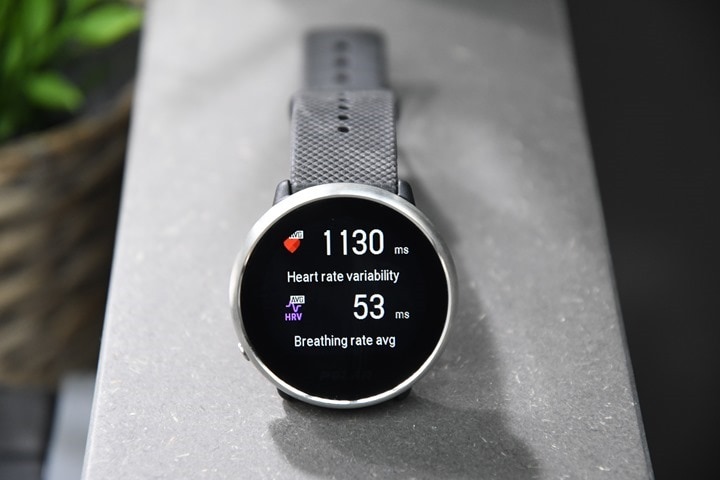
Don’t have time to read a few thousand words and a hundred photos? No worries, I’ve got you covered. The Ignite is aimed to compete primarily against something like the Garmin Forerunner 45 or Vivoactive 3, but it’s also up against the Fitbit Versa and Ionic, and even the Apple Watch Series 3 (often found for $199). Also in that range is the Samsung Galaxy Active Watch. This slate of competitors is strong, and the pricing even more so, especially with most of them often on sale for ~$199-$229 (or less).
Polar has priced the unit for $229 in the US, and 199EUR in Europe. For both base prices you’ll get a harder rubber band. Whereas in Europe if you spend 229EUR they offer a much nicer silicone band.
On the hardware side of things, here’s the quick rundown of specs:
– Color touchscreen display, single side button
– Display is not always-on (only turns on when raising wrist, like Apple Watch or most Fitbits), workout mode does have always-on option though
– Has Sony GPS chipset, like Polar Vantage series
– Polar Precision Prime optical heart rate sensor on back (same as Vantage series)
– Strap in two models, a harder rubber (base model), and a silicone strap ($30 more)
– Bluetooth Smart HR sensor support (though not power meters/cycling/footpod sensors)
– Waterproofed to 30 meters
– Swappable wristbands
– No music/storage on watch, nor NFC/contactless payments
– Claimed daily battery time of 5 days, GPS battery time of 17 hours
Most of what you see above is fairly standard. Actually, all of it is. Nothing earth-shattering there. The only ‘downside’ is that it’s not an always-on display. So unlike the vast majority of Polar watches (except the older Android WearOS based M600), this display turns off after a few seconds. And unfortunately, it’s pretty slow to turn back on too (about 3 seconds from wrist raise while running, 2 seconds sitting at a desk). But more on that down below.
What’s most interesting is what’s new in the Ignite. These are features that aren’t really seen on any other Polar watch at all (not even the Vantage series).
– Added ‘Nightly Recharge’ feature that looks at breathing rate/heart rate/heart rate variability (ANS data) to figure out if you’re recovering at night
– Added ‘Sleep Plus Stages’ which adds in REM/Light/Deep sleep
– Added a nightly sleep score
– Added ‘FitSpark’ feature which gives you daily workout options based specifically on history + Nightly Recharge (this is huge)
– Added ‘Serene’, which are guided breathing exercises (like what Fitbit and others have)
Those 4-5 features are totally new to Polar, and also the ones I’ll be diving into down below in more depth since you won’t have seen them before. But more importantly, I think some of them are doing far more of what I’ve been asking for, for years. I’ve long said there’s such a gap between what happens at night (sleeping, not the horizontal shuffle) and training guidance. You could have a horrific sleep night, and then the device turns around and says to go do a 2hr long run.
Whereas that’s somewhat the entire point of ‘FitSpark’ relying on the Nightly Recharge feature. And in my experience, it’s pretty solid at figuring out whether a night was ‘good’ or not from a recharge standpoint. I’d argue more so than Garmin’s FirstBeat based metrics have been. I got somewhat sick a few weeks back and the Ignite did a really good job of constantly classifying my sleep recharge as horrific (it used slightly nicer language, but only just barely).
But more than what’s new is all the usual Polar goodness that’s still there. Polar didn’t simply take a Vantage M watch and rip out everything from it. In fact, the vast majority of things are still present in the less expensive Ignite:
– Has structured workout support (download workouts from Polar Flow to watch)
– Tracks general activity metrics (e.g. steps, distance, calories, etc) 24×7
– Tracks heart rate 24×7
– Tracks sleep (see new sleep features though)
– Includes VO2Max score (aka ‘Running Index’)
– Includes ‘Fitness Test’ feature (VO2Max test while lying down)
– Includes *both* pool swim mode and openwater swim tracking
– Does *NOT* have multisport (aka triathlon) mode
– Includes timers (countdown timers & stopwatch)
– Includes ‘Training Benefit’ metric
– Includes distance
– Maximum of 20 sport profiles on the watch itself (far more than Apple, Garmin, Fitbit, or Suunto allow at this price point), some 100 sports on platform to add to watch
– Can apply both heart rate zones and speed zones (no power zones/nor power meter support)
– Accelerometer-based speed/distance when no GPS is available (or inside on treadmill)
Phew, got all that? Good. Now with this overview of the features and the watch itself, let’s turn towards using it. We’ll start with the daily usage bits – including all those new sleep metrics, and then we’ll shift towards sports and training.
Day to Day Basics:
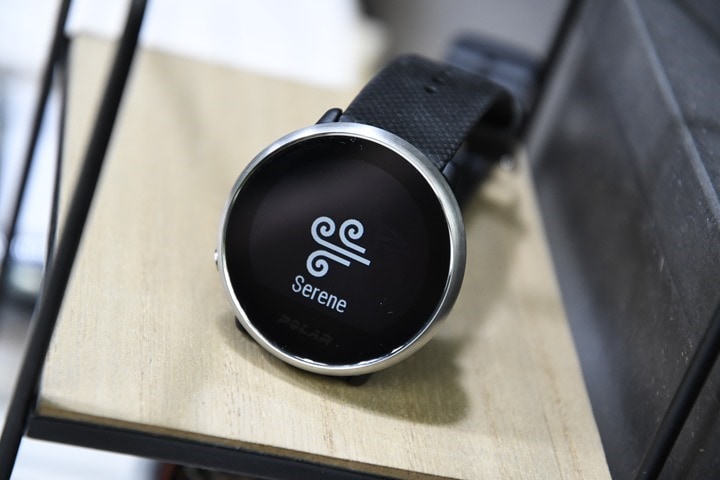
The first – and probably most important – thing to know about the Polar Ignite is the display and touch screen. The unit only has a single button on the left side, whereas all other interactions are completed through touches and swipes on the display:
The display stays off unless you touch the button or raise your wrist. This is similar to the Apple Watch and most Fitbit watches. Companies do this to conserve battery when using brighter displays. And indeed, the display on the Ignite is brighter and has more contrast than that of their Vantage series watches:
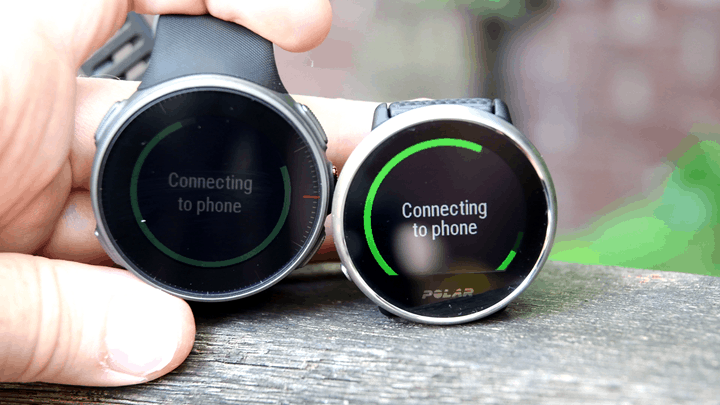
The downside though is that it’s not always on. So you have to use ‘raise to wake’, which means to raise your wrist up for the screen to turn on. And frankly, it sucks. Even workout mode only has an always-on backlight, but that doesn’t mean the screen is always on, just the backlight.
I figured it might improve with firmware updates from when it first launched, but two months in, and the raise to wake often takes 3+ seconds, and usually requires me to put my arm in weird positions to get it to actually wake up. Yet other times at night while in bed it’ll trigger itself on and lighthouse the entire room with its bright backlight. Without question, the comparatively poor raise to wake algorithm of the Ignite (in contrast to Apple or even Fitbit) is the biggest downside for me. Note that in theory you can set the bright backlight to not come on at night, but it doesn’t seem to be taking for me.
As for the touchscreen, I’d put it in the ‘meh’ category. It’s fine for casual use, but I’m glad I don’t have to interact with it a ton. Simple things like swiping between sport modes often requires repeated attempts. On the bright side, the button works every time as I’d expect. You mostly use the button for ‘back’ commands.
Speaking of the back, the unit has Polar’s Precision Prime optical HR sensor on the back, the same one as the Vantage series.
Further, by looking at the back you’ll see how the wrist straps are detachable. You can buy other ones from Polar, or go out and buy any standard 20mm straps.
Back on the front, we’ll start with the main dashboard. This shows the time/date, and then at the bottom your time since last training.
If there’s a small red dot at the bottom it indicates I’ve got smartphone notifications to check out. Here’s how they look. Super simple/basic, but does the trick.
Now technically speaking, your default dashboard might actually be a different page. For example, I can swipe to the right to see my Nightly Recharge sleep stats (random side note, as I did this for this photo, the unit actually just crashed and restarted – the first time in two months):
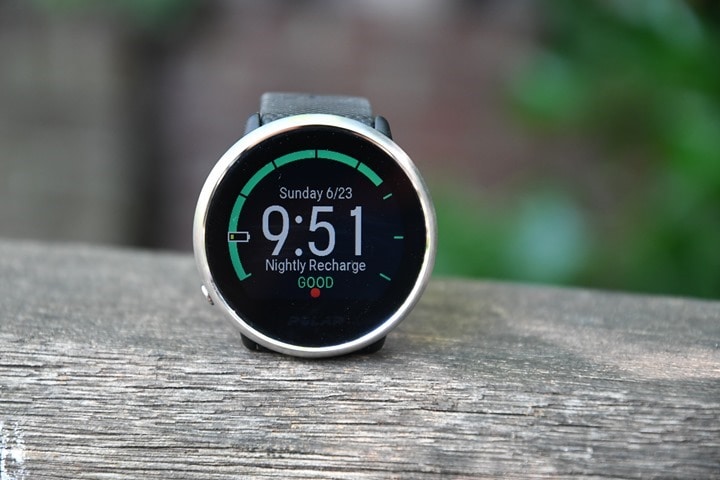
These sleep stats do depend on interaction with the Polar Flow app (only seen there). Also somewhat important is that you don’t run low on battery during the night. Last night I went to bed with low battery, but figured it was fine. While the watch was still alive when I woke up (down to 3% battery), it appears to turn off some of the advanced features to save battery for basic activity tracking. Fair enough and actually kinda logical, just an FYI though as you won’t get nightly recharge tracking if you fall below the critical battery level.
If you swipe again you’ll get the training recommendations page. This is kinda like a coach that gives you a variety of options for today’s workout. It’ll first suggest a category – such as Cardio, Strength, or Supportive. That’s shown in the upper portion of the screen:
Then once you tap into it, it’ll give you not only an exact duration, but actually multiple workouts with very specific details. But more on that later.
Swiping through the display we’ve got the regular activity tracker page, counting things like steps, active time, and calories:
Swipe again and you get your current heart rate (HR) and related stats. This uses the optical HR sensor on the back of the unit to measure HR 24×7:
With that, we’ve swiped through all the basics of the screens (aside from starting a workout), so let’s dive into that 24×7 HR bits a bit more. The 24×7 HR data is sent to Polar Flow (desktop or smartphone app), and then you can see your HR trended over the course of the day, including periods where you did a workout:
You can also look at plots of this over time. The blue line you see is your lowest HR during sleep, while the lower black line/dots is the lowest HR during the day, and the higher black line is your highest HR during the day:
In fact, those same charts above are also showing you your daily activity % over goal. Meaning that 348% is over your daily step goal. You can look at individual days by scrolling down on the daily activity feed:
Next within the app is the sleep bits. Part of that is shown above at the bottom of the screen (up above) where it shows the duration for how much you slept. The remainder though comes under the app tab titled ‘Nightly Recharge’. This is where you get all the ANS Charge and Sleep Charge details as well. In fact, there’s an astounding amount of information once you click on either of the two tiles (ANS Charge or Sleep Charge):
Of particular note is the breathing rate, which is new to the Polar Ignite (and Polar lineup). This uses some of the previously untapped elements of the Polar Precision Prime sensor. You can see breathing rate on a per night basis:
Now I’ll note that I don’t have any medically comparable data here. So this rate could be totally bogus. Perhaps I’ll get lost on Amazon and buy something I probably don’t really need to compare these metrics. Until then, you’ll just have to make do with a metric that might be accurate, but also might not be accurate.
What I can say however is that for the most part it gets a lot of things right in terms of how I felt. Let’s take the below range of days. I got kinda-sorta-fairly-sick. So much so that I wasn’t really sleeping. Perhaps 15-30 minutes at a time at best. But the rest of the time I was withering on the floor in pain. And oddly enough, the watch mostly gets that right. Check out the interruptions listed. Also, check out the nightly recharge status of ‘Compromised’, and even the ANS charge of “Much below usual” still later in the week:
That night it said ‘Compromised?’ – I’d end up in the hospital shortly after the sun came up (interestingly, I can’t find any documentation to understanding exactly what ‘Compromised’ means precisely). On the flip-side, it still then recommend an odd combination of ‘Get more sleep’ along with ‘Today is a good day for some exercise’. Trust me, as one who could barely walk 50 meters – it was not a good day for some exercise. [Story end-note: I’m perfectly fine now, though after a ton of tests they have no idea what it was.]
All of this, by the way, is mirrored on the watch itself as you go day by day. Note that it does take three days of sleep before you start seeing scores. And in the event you miss a night of sleep (because your watch battery died), then you’ll have to wait for that clock to reset again.
I think Polar’s onto something here – even if it’s not quite perfect (yet). I’d like to see them surface these recommendations up more visually on the watch itself, rather than just the app.
As a note, when it comes to syncing the watch to the app, in theory it’s supposed to happen automagically in the background. In practice – it seems rather…intermittent. Most of the time I have to manually sync the watch by long-holding the button down which then initiates a connection to my phone.
Interestingly, this is somewhat the same problem I had back during my Vantage series testing. Sometimes (and for sometimes days at a time), it’d sync just fine, but then other times it just wouldn’t ever background sync. I can’t establish a pattern there, though I can say numerous other readers reported the same. You can however also sync via the USB cable to a Mac/PC, which works just fine as well.
I’ve mostly focused on the smartphone app, but Polar also has the entire Polar Flow website, where you can do a bunch of analytics into your workouts, daily activity/sleep, as well as tweak settings around sport profiles and device connections (such as syncing to Strava):
And back on the app you can also tweak items like turning on or off smartphone notifications, as well as do-not-disturb time periods, and alarms. More or less all the basics you’d expect.
Last but not least, there’s Serene. Best I can tell, it’s got no integration with anything else. And for the most part it’s not much different than what Apple or Fitbit or others do. It simply guides you through breathing exercises. The default is to do 3 minutes of breathing, inhaling and exhaling each in 5-second phases. Rinse, repeat (I show this in the video as well).
After it’s done, it divides things up into different special zone buckets with very jewelry store sounding names:
Unlike some of their competitors, I haven’t seen any proactive recommendations from the watch telling me to do the breathing exercises. For now, you have to remember to dig into the menus and do them yourself.
Sport & Training Specifics:
With the non-sport basics out of the way, let’s switch over to using it for sports, which is likely what you bought this watch for in the first place. Because honestly, if you’re not into sport or fitness there are better watches on the market for you.
The Ignite comes with the same massive slate of sport profiles that the rest of Polar’s watches do. However while it does support up to 20 sport profiles loaded at once, some sport profiles aren’t compatible. Most specifically: Triathlon mode. The point of these modes is to not only provide a bit of a starter template for certain data fields (which you can customize), but also to ensure calorie burn is correct for each activity. Additionally, they set the GPS on status to the correct state. For example, turning it off for treadmill running, but having it enabled for openwater swimming.
When you tap into a given sport profile on the app it’ll show you up top if it’s compatible with that watch. In my case I have multiple Polar watches linked in my account, so that’s why I have so many dots up top.
Below that is where you can customize data pages and data fields. You’ll also see the toggles for dedicated data pages like time of day and heart rate pages. Of course you can create your own data pages with up to four metrics each. You can arrange these however you see fit:
Note that the Polar Ignite does not support either running power or cycling power, nor does it have an altimeter, so it doesn’t have elevation related metrics on it.
All activities on the Polar Ignite are recorded at the 1-second rate, there isn’t any method to tweak that here to prolong battery life or such (for better or worse). However, Polar does seem to get pretty strong battery life (or at least claimed so) compared to its competitors in this price range. That said, I’m not sure I’d get the claimed 17 hours of GPS-on time. I am pretty consistently getting a solid 5 days of battery life with about 45-55 minutes of GPS time each day, or a longer weekend ride or run in there. But I haven’t done a full GPS ‘till death do us part’ test. However, some of you DCR readers have done some much longer activities and it seems folks are on track for like 10-12 hours GPS-on time.
In any event, switching over to the sensor side of the house – you’ve got the optical HR sensor on the back of the unit. But if you want to pair it with a chest strap instead, you can do that via the sensors menu. No cycling sensor support here though. Also, this is only for Bluetooth Smart sensors – no ANT+ sensors supported at this point (though, Polar did semi-recently start adding ANT+ support to their Polar OH1 and H10 units).
Also note that the Ignite doesn’t support legacy analog chest straps, which in turn means that you can’t get heart rate from a chest strap while underwater. Though you can get it from your wrist. So…win some, lose some.
In any event, to start your workout you’ll either press the button once, or, swipe a few times and then tap the ‘Start Training’ option:
Once that’s done you’ll swipe-de-swipe a bunch till you find the sport you’ll be suffering through today. This is the area where the touchscreen shines the least. I find it doesn’t swipe well and I’m often swiping repeatedly to get past a given sport. Further, it doesn’t appear that Polar is doing any sorting logic here in terms of the sports displayed. Yes, it’ll default to your last used sport, but beyond that it doesn’t order them by what you used before then. Instead, it’ll use them based on the order sorted on the Polar Flow app. With so many sports (20) loaded on there, it’d be handy if it kept your three most frequently used ones near.
Once you’ve selected the sport though it’ll show a circle around your heart rate (green means ready, red means locking still), and the location icon (green means ready, red means wait). For pool swims it’ll show the pool size to tweak if you want to. And remember, the watch even supports openwater swims (but not triathlon mode).
And, you can also pull up favorite structured workouts, as well as an on-unit interval workout option:
Assuming you’ve been wearing the watch already, the HR acquisition has always been instant for me. In my experience with GPS on the Ignite, it finds GPS almost immediately every time. At present Polar is only doing GPS+GLONASS, and not doing any form of GALILEO satellite connectivity. Perhaps down the road. With all that set, off to start your workout you go. The watch will display stats from the workout in real-time as you expect, once you tap in the center of the screen to start.
One item of note is that while there is automatic lap (configured as either distance or duration), there is no manual lap option. Again, no manual lap option. This is one that many runners would likely lament, especially if doing any sort of intervals that you didn’t program into the watch. I don’t really understand the logic here. And it’s something that others have stumbled on in the past as well (I remember Garmin skipping this on some low-mid range watches initially and then adding it back in after users rightly got angry).
We’re going to dive into the actual GPS & HR accuracy in the following sections. But note that by and large the watch worked for me just fine for outdoor workouts, though as noted the screen being always off and waiting for it to turn on is super annoying, especially when running. Once you’re done, you’ll get the summary information on the watch.
In addition, upon syncing to your smartphone you’ll get the same summary with a bunch more details there too. Typically if just syncing a single workout it’ll complete it in under a minute or so. You can long-hold the button down to get it to sync manually:
All of this is then automatically synced to any partner websites that you’ve set up – such as Strava, TrainingPeaks, and so-on:
But let’s actually circle all the way back to the earlier dashboard bits around something called ‘FitSpark’. FitSpark is basically a virtual coach that has no overarching fitness/seasonal goal in mind, except to give you a workout of the day. But the biggest and most important take away is that it looks at your nightly recharge scores and underlying sleep data to determine whether or not you should be doing anything at all.
That’s a super critical gap that’s been missing. Most automated training guidance coaches/platforms don’t do that. And by ‘most’, I mean, ‘none do’. You could have a newborn at home and be days deep of horrific sleep, and they’ll tell you to go out and run a 2hr long run. Whereas Polar will look at that sleep data and give you a go/no-go type guidance, and then depending on what your greater training data looks like, will also give you specific workouts to do.
Remember, this isn’t tied to a plan. Meaning, you’re not tied to some 5KM running plan. This is basically saying ‘Hi there, I know a scary amount about you, here’s four options for workouts today. Pick one.’
Oh, right, yes, it gives you options. Numerous options. Pick your poison:
And then for each of those options it’ll give you the specific steps and guidance in the watch itself. There are cardio-focused running workouts with different intensities. And then there are core type workouts too, and for those, it’ll give you the specific moves to do, along with animations and text for each one:
But let’s say you choose the cardio workout, go run an hour or so, and then finish up. At that point the watch gives you new suggestions. Specifically ones around active recovery such as stretching and related core workouts that’ll help and support that initial workout.
Seriously.
It’s like for once the coaching aspects of the unit are actually smart. It’s not just following some blind plan telling you to do something just because it was on the schedule. It’s making up the schedule on the fly based on what it knows about your exact day thus far.
And atop all that, if we dive back into the strength workouts, it’ll give you actual animated icon stick figures for each of the strength-specific items, as part of the full workout. This is roughly like what Fitbit has been doing for a few years now, but…from a company not called Fitbit. Garmin and Suunto both lack something like this.
Ultimately, after two months of looking at FitSpark suggestions, I think Polar’s trending in the right direction here. Having a watch give you specific workouts that seem to align to your current health state is certainly the direction all wearables should be going in the future, and I think Polar’s got a head start. It is different however than the typical Training Load or Recovery Pro bits that Polar has on their higher-end Vantage series watches.
In those cases, Polar is looking at your specific *training* over time and tracking that, or your specific recovery over time. It’s not looking so much (if at all) at your day to day life, whereas FitSpark is. To that end, Polar says they’re developed for different audiences in mind. With the Vantage series they’re assuming you’ve got a plan and are following it. Whereas with FitSpark they’re assuming you’re looking for guidance.
At a high level, those are logical assumptions. But ultimately even Olympic gold medalists have an off-season, and that’s where for most of us ‘have a plan athletes’ we’re looking for a bit of variety and just enough to keep us from falling off the bandwagon entirely. That’s where FitSpark seems to fill a role that could be applied to the Vantage series. In talking to Polar, they hadn’t really seen it looked at that way before, but are considering it for down the road. As it stands today, FitSpark is more or less the only feature not coming to the Vantage series watches in November. Polar noted that the challenge would be how to balance FitSpark with the Training/Recovery Pro features that are in some ways at odds with FitSpark. Remember – FitSpark’s goal is to get/keep you active, whereas Recovery Pro’s goal is to tell you to chill out.
Still, I’m excited to see where Polar can take this from here.
GPS Accuracy:
There’s likely no topic that stirs as much discussion and passion as GPS accuracy. A watch could fall apart and give you dire electrical shocks while doing so, but if it shows you on the wrong side of the road? Oh hell no, bring on the fury of the internet!
GPS accuracy can be looked at in a number of different ways, but I prefer to look at it using a number of devices in real-world scenarios across a vast number of activities. I use 2-6 other devices at once, trying to get a clear picture of how a given set of devices handles conditions on a certain day. Conditions include everything from tree/building cover to weather.
Over the years I’ve continued to tweak my GPS testing methodology. For example, I try to not place two units next to each other on my wrists, as that can impact signal. If I do so, I’ll put a thin fabric spacer of about 1”/3cm between them (I didn’t do that on any of my Ignite workouts). But often I’ll simply carry other units by the straps, or attach them to the shoulder straps of my hydration backpack. Plus, wearing multiple watches on the same wrist is well known to impact optical HR accuracy.
Next, as noted, I use just my daily training routes. Using a single route over and over again isn’t really indicative of real-world conditions, it’s just indicative of one trail. The workouts you see here are just my normal daily workouts. I’ve had quite a bit of variety of terrain within the time period of Ignite testing. This has included runs in: Amsterdam (Netherlands), Newfoundland (Canada), Italian Alps, Venice (Italy), and a bit in the Greek Islands. I’ve probably forgotten some other trips too, it’s been kinda crazy.
First up is a run earlier this week around the rowing basin near me. I actually go back and forth on a path a bunch, which is always interesting to analyze. Here’s the full data set, against an Apple Watch and a Garmin Forerunner 945.
Even at this level you can already see the Polar Ignite errors, in red. Here, I’ll zoom in on them:
You can see that it quickly has me off in the swamps. I mean sure, that’s great if you’re a bird watcher (seriously, lots of bird watchers in there), but less ideal for running. Even crossing the small pedestrian bridges here the Polar Ignite has me off the side and into the canals on all of them.
While the watch does get a bit better for the next section, it’s not perfect. Sure, perhaps I’m nitpicking, but we’re talking having me off the trail by probably 20-30 meters here. None of the other watches are this far off consistently.
And then above to the left I apparently barnstorm the pancake house’s barn. As my toddler daughter will tell you – that place is full of those crazy-ass peacock birds. Nobody wants any of that action.
That said, for the remainder of the time I spent running back down the basin, things are actually pretty good. Including the repeated back and forth area where I was spending time doing intervals:
Though if you zoom in, you can easily see that the least accurate of the three watches was the Polar Ignite. At which point you might say ‘Well, that’s because the other watches were more expensive.’ To which I’d say: Nope-de-nope. As one who has done about a thousand or so of these comparisons, I’ve never seen price a factor in GPS accuracy. There are super expensive watches with crappy GPS accuracy, and super cheap ones with awesome accuracy.
GPS accuracy doesn’t tend to care about the price of the watch, it cares about the implementation and design of the GPS antenna/case, chipset, and firmware/algorithms. This is true of every watch I’ve ever reviewed, including some past very inexpensive Polar GPS watches that have done really well in GPS tests.
Moving along to last weekend’s Sunday run, we’ve got a larger loop around the lake. Again, nothing super fancy here. Some initial/ending bits near buildings, and then a pile in the wooded area of the park, and also some open field areas. A good blend. Here’s the dataset against a Garmin Forerunner 935, FR945, and Suunto 5:
The run actually gets off to a fairly good start, with no immediate errors by anyone. A mile or two into things, and it’s still looking pretty good. Here’s an area through the wooded parkland of crazy free-roaming fuzzy cows. No issues here, save one blip by the FR935 coming around a corner:
And again, mostly the same a bit further in the run as I crossed over and back under a bridge to cross the waterway. All was fine:
I did, however, see a bit of variance from the Forerunner 935 on the edge of the field/trees border, with it bobbling a little bit, whereas the Ignite seemed to nail it along with the FR945 and Suunto 5:
And that was basically the story for the rest of the run. As I got back into the city the FR945 took one detour into the railyard for a couple of seconds, but by and large everyone stayed basically together.
Next, let’s switch over to doing loops around in Newfoundland, Canada in the woods. These trees weren’t crazy high or anything, but it’s a good test of correct positioning nonetheless. This is against the Garmin FR945 and the Garmin MARQ Athlete watch.
Now I know the above/below can be a bit hard to see, but the key thing to look for is the red line. That’s the Polar. And it’s always off in the trees. The MARQ and FR945 are actually largely on the trail or within a meter or two of it.
Though, all watches, including the Polar Ignite and MARQ did quite well on this brief out and back section when I left the woods and stumbled into a neighborhood. Including most notably staying on the outer edge of this cul-de-sac:
Whereas below you can see when I got back towards the clearing of the baseball fields, the Polar Ignite was always the odd man out.
Now let’s shift over to a quick ride. Well, a quick review of the ride. The reality is that for road bike riding most GPS units handle it fairly well, and this was no different for the Polar Ignite. Here’s that overview/data set:
Zooming into some of the forested bike path section for the fun of it:
You’ll see that the Edge 530, Stages L50, and Garmin MARQ do just fine. Whereas the Polar Ignite GPS cuts the corners a bit above. Other times though all units easily make the corners, even under some relatively significant 4+ lane highway overpasses that this little zig-zag goes under, like below.
To wrap things up – the GPS on the Polar Ignite isn’t awesome. It’s not horrible, but it’s definitely not great either. Whatever tradeoffs Polar apparently had to make for the Ignite show most visibly in GPS accuracy, and my discussions with Polar don’t inspire confidence that they can fix these specific accuracy issues with firmware. After all, this is the same GPS chipset used in their Polar Vantage V & M series watches, and the same chipset used by both Garmin and Suunto in their watches over the past year. As such, we kinda have a rough baseline for the capabilities of the underlying chipsets. From that point it’s down to implementation in firmware, but most importantly antenna and case design.
For many casual users, these GPS errors are probably minor. But if you’re more discerning, some of these errors might drive you nuts.
(Note: All of the charts in these accuracy portions were created using the DCR Analyzer tool. It allows you to compare power meters/trainers, heart rate, cadence, speed/pace, GPS tracks and plenty more. You can use it as well for your own gadget comparisons, more details here.)
Heart Rate Accuracy:
(Note: While it says ‘Beta’ unit on it, Polar confirmed it’s actually a final unit in terms of hardware and software. Polar always prints that on units headed to reviewers early on.)
Before we move on to the test results, note that optical HR sensor accuracy is rather varied from individual to individual. Aspects such as skin color, hair density, and position can impact accuracy. Position, and how the band is worn, are *the most important* pieces. A unit with an optical HR sensor should be snug. It doesn’t need to leave marks, but you shouldn’t be able to slide a finger under the band (at least during workouts). You can wear it a tiny bit looser the rest of the day.
Ok, so in my testing, I simply use the watch throughout my normal workouts. Those workouts include a wide variety of intensities and conditions, making them great for accuracy testing. I’ve got steady runs, interval workouts on both bike and running, as well as tempo runs and rides – and even running up and down a mountain.
For each test, I’m wearing additional devices, usually 3-4 in total, which capture data from other sensors. Typically I’d wear a chest strap (usually the Garmin HRM-DUAL), as well as another optical HR sensor watch on the other arm (primarily the Polar OH1+, but occasionally the Wahoo TICKR FIT, and Scosche 24 too). Note that the numbers you see in the upper right corner are *not* the averages, but rather just the exact point my mouse is sitting over. Note all this data is analyzed using the DCR Analyzer, details here.
While I’ve been using the Polar Ignite since mid-June, I’ll largely focus on the most recent workouts since they’d have the most recent firmware, though I haven’t really seen any shift in accuracy one way or another during this time period.
First up on the docket is an interval run from earlier this week. Pretty straightforward warm-up period, then a slight build and then into 4x500m. Nothing fancy really. For comparison was the Apple Watch Series 4 on the other wrist, then a Garmin HRM-TRI chest strap on my chest. Here’s how that data set looked:
Overall the above isn’t too bad, save for whatever the heck went wrong around the 1-4 minute marker for the Polar Ignite. You can see those significant spikes there. This was just an area on simple bike paths running through the fields and forests. Nothing fancy or complicated. Though you can see the classic Apple Watch optical HR sensor fail at the beginning. Apple doesn’t have a ‘standby’ menu for workouts, so basically it takes the first minute or so to acquire HR, which it does as part of your workout. That’s why that straight line is there, and even then it’s wobbly for a bit.
After that though, it settled down across the board. So here’s a look at the intervals:
Remember the teal line is roughly our baseline (the chest strap). While I wouldn’t always say that chest straps are more correct than optical HR sensors, in this case I’d easily consider that a known good and the most accurate display of my actual effort. You can see that the Polar Ignite though is slow on the first recovery, basically missing it all, though the 2nd/3rd/4th recoveries are better, albeit still a bit delayed.
Generally speaking, I place less of a concern on how quickly an optical HR sensor shows recovery as long as it’s within at least a few seconds or so. This is pushing the limits of that a bit, especially when it misses some recovery portions entirely. Meanwhile, on the actual intervals themselves it does handle itself fairly well (perhaps because it skipped the recovery on some of them). In fact, we see some little optical HR quirks with the Apple Watch, brief spikes/drops.
What’s semi-interesting about that is I suspect those are actually errors Apple has made in post-processing correction. Apple’s HR sensor is generally exceedingly good, in part because they do machine learning after the workout to sort things out. In fact, Polar has discussed this kind of stuff as well. The flip side to this is that while it ‘cleans’ workout for post-activity analysis, it still means the HR is potentially wrong during your workout.
In any case – let’s shift to another workout, this time mostly steady-state for a weekend run. I’ve got a lot of comparative sensors on me on this one, since I could attach the extra recording watches to the running stroller and have them collect for my heart rate strap. So from a HR standpoint I’ve got a Polar OH1 Plus on my upper arm, and a Garmin HRM-DUAL on my chest, and on my right wrist is the Suunto 5, with my left wrist being the Polar Ignite. Note that I pushed the stroller exclusively with my right hand (the Suunto), letting my left hand/arm swing like normal (with the Polar). You can see some of the funk in that below, so I won’t really hold that against Suunto here. Full data set here:
As you can see, the Suunto and Polar get off to a bad start. It takes a few minutes for both to calm down. Though once they do, things are pretty much smooth sailing for the Polar and other sensors till my brief boat ride:
The above (sans-Suunto) are relatively close – within 1-2BPM the entire time, mostly dependent on slight shifts up/down. You see there’s a brief drop after this where I took a 20-second boat ride to get across the canal. I stopped all watches here on purpose, and then resumed them on the other side.
What we see though is that by and large things are pretty good (again, ignoring the Suunto hand-pushing issues). A minor blip at the 56-minute marker from the Polar Ignite, but everyone else is pretty darn close.
So what about cycling? Ask and you shall receive. Simple road cycling prior to sunset around the countryside with a friend. Nothing crazy intensity or temperature-wise, just a nice ride. Data set here.
That teal line that drops out and spikes up is the Garmin MARQ Athlete. It’s the one that sticks out the most as least like the others. Whereas the Polar Ignite is pretty close to spot-on with the Garmin HRM-DUAL chest strap and the Polar OH1-Plus sensor Cycling outdoors is typically one of the most challenging things for wrist-based optical HR sensors, primarily in any shifts in intensity, and this time the Ignite nails it.
That’s also true when we zoom in:
But the vast majority of the ride things were generally within 1-2BPM of the rest of the sensors.
Ultimately, for the most part the Polar Ignite does fairly well on the optical HR sensor side – especially cycling. Like many optical HR sensors (and even chest straps) there are cases and times where things go off the rails, but in the case of the Ignite, it does appear to only briefly, and not for long periods of time. However, there does seem to be some delays in recovery time for different interval sessions I’ve done.
Product & Pricing Comparison:
I’ve added the Polar Ignite into the product comparison tool, which allows you to compare it against any watches I’ve reviewed to date.
Now, I said in the very first intro paragraph that we needed to talk pricing, as this is where I think Polar missed the mark. Sure, they missed the mark when they bait and switched (purposefully or accidentally) the price on day of launch from a planned $199USD to $229USD, only telling me a few hours later despite their press release stating otherwise. So while I was annoyed about that, the core of the issue remains: It’s just not as competitive at $229.
And some of you might think ‘What’s $30?’, but let me explain how big a deal $30 matters in this particular market segment.
See, when Polar had their massive hit success of the original Polar M400 a few years back, they did so because they undercut everyone on pricing. It was a runaway moment for the company that ultimately forced Garmin to dramatically cut prices on their watches. A pricing theme that’s stayed ever since – impacting not just them but the entire industry. It was a watch that had not just a ton of features, but was priced far below everyone else.
And that’s roughly what the Polar Ignite could have been at $199, but at $229 it’s in an entirely different camp. Here, let me show you. Here’s what Polar is competing with in this market. These are the specific watches that the unit will sit next to at Best Buy or in any gadget line-up:
Fitbit Versa (with music, no GPS): $199
Apple Watch Series 3 (with GPS, music, contactless payments): $199
Garmin Forerunner 45 (with GPS): $199
Garmin Vivoactive 3 Music (with GPS, contactless payments): $199
Samsung Galaxy Active Watch (with GPS, contactless payments, music): $199
Fitbit Versa (with music, contactless payments): $229
Fitbit Ionic (with music, GPS): $229
Polar Ignite GPS: $229
And, atop that, both the Fitbit Versa and Ionic are often found for $30 cheaper as well. The Garmin Vivoactive 3 is sub-$190 often, and the Vivoactive 3 Music at $199 price is what’s showing this very second on Amazon – it’s frequently at that level. All of those watches have music. Some have contactless payments, most have GPS. Some even have support for streaming services like Spotify or Apple Music.
One might try and argue that someone looking for a fitness-focused watch would skew towards Garmin or Polar instead of Apple. But for this target market, that’s a silly assertation that doesn’t reflect real life. Most customers for this watch aren’t hardcore endurance athletes – so any of the above units will likely fit well. Therefore, one can quickly see that $229 puts you on the higher end of pricing, and that’s all before we begin the annual early-September sweep of new mid-range watches from all the usual major suspects. Every year Apple, Garmin, Samsung, and Fitbit have historically announced new products. That’ll drive pricing of all the above-listed products lower while new products come in at roughly existing pricing.
As I said, Polar has overpriced this product in the US market, it’s really as simple as that. In the European market, they kept the 199EUR pricing, which is on-point as basically all of the above prices are parity for EUR/USD.
In any case, as for the full feature database on the Ignite, you’ll see it below. You can easily mix and match against any other products within the database here, by creating your own product comparison tables. Note that in some cases nuanced features (like having ANS data), doesn’t really fit well into product comparison tools designed to host hundreds of watches (when only a single watch has it).
| Function/Feature | Polar Ignite GPS | Apple Watch Series 3 | Fitbit Ionic | Garmin Forerunner 45/45S | Samsung Galaxy Active |
|---|---|---|---|---|---|
| Copyright DC Rainmaker - Updated November 17th, 2022 @ 10:19 am New Window | |||||
| Price | $229 | $169-$179 | $229 | $199 | $199 |
| Product Announcement Date | June 26th, 2019 | Sept 12th, 2017 | Aug 28th, 2017 | Apr 30th, 2019 | Feb 20th, 2019 |
| Actual Availability/Shipping Date | July 2019 | Sept 22nd, 2017 | Oct 1st, 2017 | Early May 2019 | Mar 9th, 2019 |
| GPS Recording Functionality | Yes | Yes | Yes | Yes | Yes |
| Data Transfer | USB, BLUETOOTH SMART | Bluetooth Smart | Bluetooth Smart | USB, Bluetooth Smart | Bluetooth Smart |
| Waterproofing | Yes - 30m | 50m | 50m | 50 meters | 50 meters |
| Battery Life (GPS) | Up to 17 hours | 5hrs GPS on time (24-48hrs standby) | 10 hours | 13 Hours | Undeclared (claims 45hrs non-GPS) |
| Recording Interval | 1s | Varies | 1-second | SMART RECORDING (VARIABLE) | 1-second for GPS, 1-minute for HR |
| Alerts | Vibrate/Visual | Vibration/Audio/Visual | Visual/Vibrate | Sound/Visual/Vibrate | Vibrate/Visual |
| Ability to download custom apps to unit/device | No | Yes | Yes | Watchfaces only | Yes | Music | Polar Ignite GPS | Apple Watch Series 3 | Fitbit Ionic | Garmin Forerunner 45/45S | Samsung Galaxy Active |
| Can control phone music | No | Yes | Yes | Yes | Yes |
| Has offline music storage and playback | No | Yes | Yes | No | Yes |
| Streaming Services | No | Apple Music, Spotify (but not offline yet) | Pandora, Deezer | No | Spotify | Payments | Polar Ignite GPS | Apple Watch Series 3 | Fitbit Ionic | Garmin Forerunner 45/45S | Samsung Galaxy Active |
| Contactless-NFC Payments | No | Yes | Yes | No | Yes (but only with Samsung phone) | Connectivity | Polar Ignite GPS | Apple Watch Series 3 | Fitbit Ionic | Garmin Forerunner 45/45S | Samsung Galaxy Active |
| Bluetooth Smart to Phone Uploading | Yes | Yes | Yes | Yes | Yes |
| Phone Notifications to unit (i.e. texts/calls/etc...) | Yes | Yes | Yes | Yes | Yes |
| Live Tracking (streaming location to website) | No | With 3rd party apps | No | Yes | No |
| Group tracking | No | No | No | No | No |
| Emergency/SOS Message Notification (from watch to contacts) | No | Yes | No | Yes (via phone) | No |
| Built-in cellular chip (no phone required) | No | Yes (with cellular version) | No | No | No | Cycling | Polar Ignite GPS | Apple Watch Series 3 | Fitbit Ionic | Garmin Forerunner 45/45S | Samsung Galaxy Active |
| Designed for cycling | Yes | Yes | Yes | Yes | Yes |
| Power Meter Capable | No | No | No | No | No |
| Speed/Cadence Sensor Capable | No | No | No | Yes | No |
| Strava segments live on device | No | No | No | No | No |
| Crash detection | No | No | No | Yes | No | Running | Polar Ignite GPS | Apple Watch Series 3 | Fitbit Ionic | Garmin Forerunner 45/45S | Samsung Galaxy Active |
| Designed for running | Yes | Yes | Yes | Yes | Yes |
| Footpod Capable (For treadmills) | No | With 3rd party apps | No (but has treadmill functionality) | YES (ALSO HAS INTERNAL ACCELEROMETER) | With 3rd party apps |
| Running Dynamics (vertical oscillation, ground contact time, etc...) | No | No | No | No | No |
| Running Power | No | No | No | No | |
| VO2Max Estimation | Yes | Yes | Yes via app | Yes | No |
| Race Predictor | No | No | No | No | No |
| Recovery Advisor | No | No | No | no | No |
| Run/Walk Mode | No | With 3rd party apps | No | Yes | With 3rd party apps | Swimming | Polar Ignite GPS | Apple Watch Series 3 | Fitbit Ionic | Garmin Forerunner 45/45S | Samsung Galaxy Active |
| Designed for swimming | Yes | Yes | Yes | NO (PROTECTED THOUGH JUST FINE) | Yes |
| Openwater swimming mode | Yes | YEs | No | N/A | Yes |
| Lap/Indoor Distance Tracking | Yes | Yes | Yes | N/A | Yes |
| Record HR underwater | Yes | Yes | No | N/A | Yes |
| Openwater Metrics (Stroke/etc.) | Yes | Basic stroke type only | No | N/A | No |
| Indoor Metrics (Stroke/etc.) | Yes | Basic stroke type only | Yes | N/A | Yes |
| Indoor Drill Mode | No | No | No | N/A | No |
| Indoor auto-pause feature | Yes | Yes | No | N/A | No |
| Change pool size | Yes | Yes | Yes | N/A | Yes |
| Indoor Min/Max Pool Lengths | 20M/Y to 250 m/y | 1y/m to 1,500y/m+ | 10m/y-100m/y | N/A | |
| Ability to customize data fields | Yes | Very limited | Yes | N/A | |
| Captures per length data - indoors | Yes | Yes | N/A | Yes | |
| Indoor Alerts | N/A | Yes (goals) | Yes (distance) | N/A | No | Triathlon | Polar Ignite GPS | Apple Watch Series 3 | Fitbit Ionic | Garmin Forerunner 45/45S | Samsung Galaxy Active |
| Designed for triathlon | No | Not really | No | No | No |
| Multisport mode | No | Yes | No | No | Sorta (can combine sports manually) | Workouts | Polar Ignite GPS | Apple Watch Series 3 | Fitbit Ionic | Garmin Forerunner 45/45S | Samsung Galaxy Active |
| Create/Follow custom workouts | Yes | With 3rd party apps | No (Premium Coached only) | Yes | No |
| On-unit interval Feature | Sorta (offers structured workouts) | With 3rd party apps | No | Yes | No |
| Training Calendar Functionality | Sorta (offers daily workouts | With 3rd party apps | No | Yes | No | Functions | Polar Ignite GPS | Apple Watch Series 3 | Fitbit Ionic | Garmin Forerunner 45/45S | Samsung Galaxy Active |
| Auto Start/Stop | Yes | Yes | Yes | Yes | |
| Virtual Partner Feature | No (but can give out of zone information) | No | No | Virtual Pacer | Pace guidance only |
| Virtual Racer Feature | No | No | No | No | No |
| Records PR's - Personal Records (diff than history) | No | No | No | Yes | No |
| Tidal Tables (Tide Information) | No | No | No | No | No |
| Weather Display (live data) | No | Yes | Yes | Yes | Yes | Navigate | Polar Ignite GPS | Apple Watch Series 3 | Fitbit Ionic | Garmin Forerunner 45/45S | Samsung Galaxy Active |
| Follow GPS Track (Courses/Waypoints) | No | With 3rd party apps | No | No | No |
| Markers/Waypoint Direction | No | With 3rd party apps | No | No | No |
| Offline Maps | No | With 3rd party apps | No | No | No |
| Back to start | No | With 3rd party apps | No | No | No |
| Impromptu Round Trip Route Creation | No | With 3rd party apps | No | No | No |
| Download courses/routes from phone to unit | No | With 3rd party apps | No | No | 3rd party apps | Sensors | Polar Ignite GPS | Apple Watch Series 3 | Fitbit Ionic | Garmin Forerunner 45/45S | Samsung Galaxy Active |
| Altimeter Type | GPS | Barometric | Barometric | No | Barometric |
| Compass Type | N/A | N/A | N/A | None | N/A |
| Optical Heart Rate Sensor internally | Yes | Yes | Yes | Yes | Yes |
| SpO2 (aka Pulse Oximetry) | No | No | No | No | |
| Heart Rate Strap Compatible | Yes | Yes | No | Yes | 3rd Party Apps only |
| ANT+ Heart Rate Strap Capable | No | No | No | Yes | No |
| ANT+ Speed/Cadence Capable | No | no | No | Yes | No |
| ANT+ Footpod Capable | No | No | No | Yes | No |
| ANT+ Power Meter Capable | No | No | No | No | no |
| ANT+ Lighting Control | No | No | No | No | no |
| ANT+ Bike Radar Integration | No | No | No | No | No |
| ANT+ Trainer Control (FE-C) | No | No | No | No | No |
| ANT+ Remote Control | No | No | No | No | No |
| ANT+ eBike Compatibility | No | No | No | No | No |
| ANT+ Gear Shifting (i.e. SRAM ETAP) | No | No | No | No | nO |
| Shimano Di2 Shifting | No | No | No | No | No |
| Bluetooth Smart HR Strap Capable | Yes | Yes | No | No | 3rd party apps only |
| Bluetooth Smart Speed/Cadence Capable | No | No | No | No | No |
| Bluetooth Smart Footpod Capable | No | No | No | No | 3rd party apps only |
| Bluetooth Smart Power Meter Capable | No | No | No | No | No |
| Temp Recording (internal sensor) | No | No | No | No | Yes |
| Temp Recording (external sensor) | No | No | No | No | No | Software | Polar Ignite GPS | Apple Watch Series 3 | Fitbit Ionic | Garmin Forerunner 45/45S | Samsung Galaxy Active |
| Desktop Application | Polar Flowsync - Windows/Mac | None | PC/Mac | Garmin Express (PC/Mac) | No |
| Web Application | Polar Flow | None | Yes | Garmin Connect | No |
| Phone App | iOS/Android | iOS only | iOS/Android/Windows | iOS/Android | iOS/Android (iOS is limited though) |
| Ability to Export Settings | No | No | No | No | No | Purchase | Polar Ignite GPS | Apple Watch Series 3 | Fitbit Ionic | Garmin Forerunner 45/45S | Samsung Galaxy Active |
| Amazon | Link | Link | Link | Link | Link |
| Backcountry.com | Link | ||||
| Competitive Cyclist | Link | ||||
| REI | Link | Link | DCRainmaker | Polar Ignite GPS | Apple Watch Series 3 | Fitbit Ionic | Garmin Forerunner 45/45S | Samsung Galaxy Active |
| Review Link | Link | Link | Link | Link | Link |
Remember, you can mix and match and create your own product comparison tables here, for watches not seen above.
Summary:
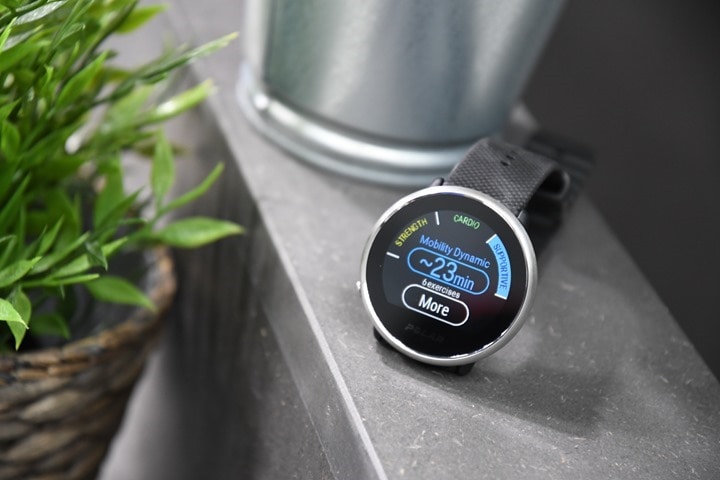
Overall Polar’s done some impressive things on the Ignite, mainly from a software functionality standpoint. The Nightly Recharge and FitSpark functionality are truly new within not just Polar’s lineup, but across the sports tech and fitness industry. It’s great to see Polar leading again in some areas of feature innovation, which frankly hasn’t happened in a number of years. I’m looking forward to seeing how Polar can incorporate those features into their higher-end Vantage series watches going forward.
And digging further into FitSpark, adding in elements around strength and supportive workouts and having specific animations for which moves to do and guided workouts is something that most other companies in the industry simply don’t have. Sure, numerous other watches in the past have done this sort of thing – but a number of those are no longer with us (here’s looking at you, Adidas SmartRun GPS). And certainly neither Garmin or Suunto, or Apple natively, have that type of functionality at this point.
On the flip side, this unit definitely has elements that remind me that it’s kinda a first-gen watch. Or at least it feels like it. The display wrist turn/raise detection just isn’t good, and the GPS accuracy by Polar’s own admission lags behind their own other watches. This isn’t just a GPS chipset thing anymore, but more of a fundamental design element that really shouldn’t exist (seriously, there’s no reason why a $229 GPS should be notably worse than a $279 GPS). And of course, all of this ignores that for many people, the unit is just a bit overpriced within the US market.
The good news is some of these things they can likely fix with updates, be it software or pricing. I suspect they have the hardware in the Ignite to spend time on better algorithms for the display wake-up. And certainly changing the price is as simple as a single conference call, just like they’ve done on other products in the past. For the GPS however, I get the impression from Polar that’s perhaps a hardware-driven limitation, either in components or design.
Like I’ve said a few times though – I’m eager to see where Polar can take things with the Ignite, it’s a great base for the company to start from and ultimately a solid offering in the marketplace to consider.
Found This Post Useful? Support The Site!
Hopefully you found this review/post useful. At the end of the day, I’m an athlete just like you looking for the most detail possible on a new purchase – so my review is written from the standpoint of how I used the device. The reviews generally take a lot of hours to put together, so it’s a fair bit of work (and labor of love). As you probably noticed by looking below, I also take time to answer all the questions posted in the comments – and there’s quite a bit of detail in there as well.
If you're shopping for the Polar Ignite GPS or any other accessory items, please consider using the affiliate links below! As an Amazon Associate I earn from qualifying purchases. It doesn’t cost you anything extra, but your purchases help support this website a lot.
And finally, here’s a handy list of accessories that work well with this unit (and some that I showed in the review). Given the unit pairs with just about any Bluetooth Smart sport sensors, you can use just about anything though.
And of course – you can always sign-up to be a DCR Supporter! That gets you an ad-free DCR, access to the DCR Shed Talkin' video series packed with behind the scenes tidbits...and it also makes you awesome. And being awesome is what it’s all about!
Thanks for reading! And as always, feel free to post comments or questions in the comments section below, I’ll be happy to try and answer them as quickly as possible. And lastly, if you felt this review was useful – I always appreciate feedback in the comments below. Thanks!



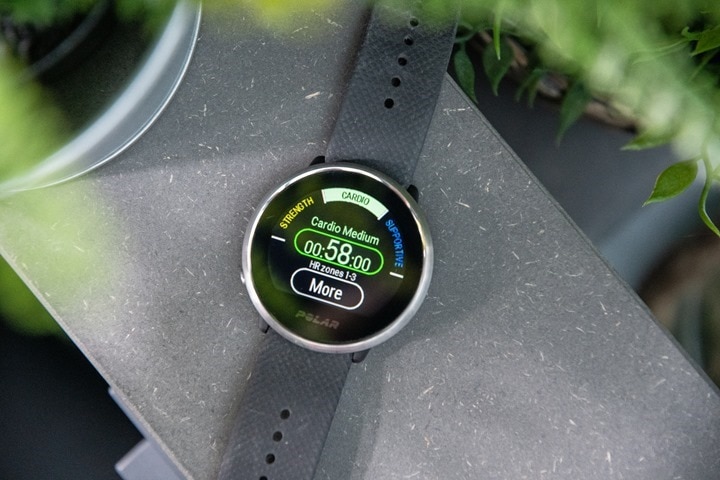
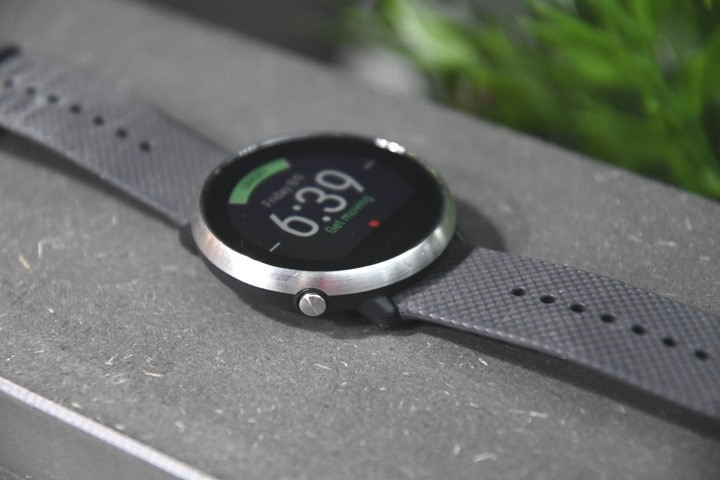
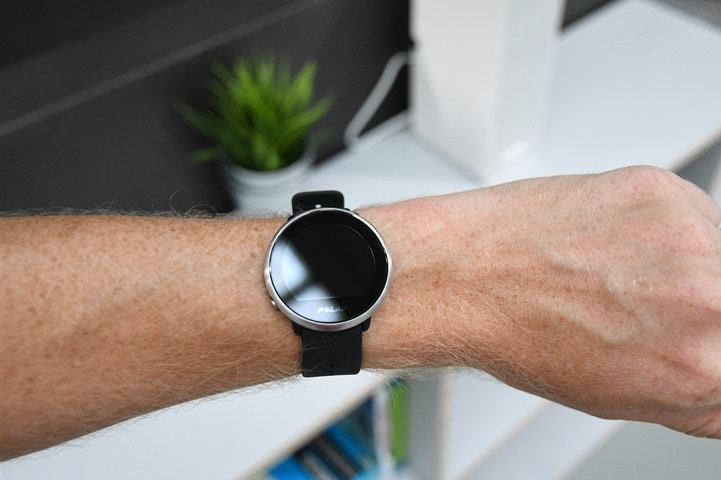
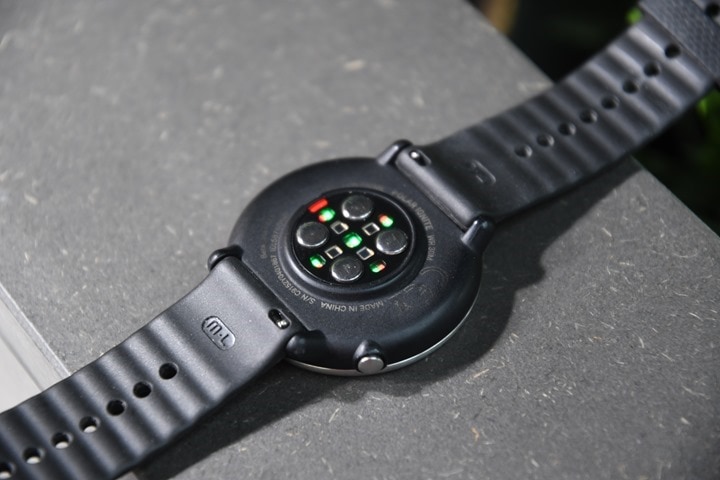
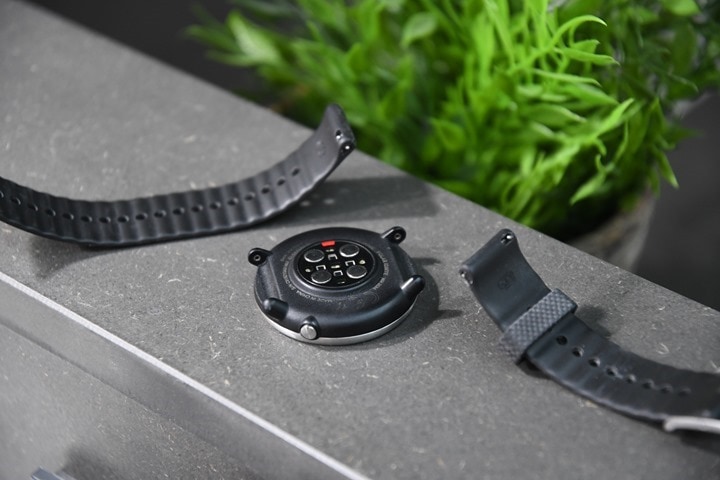
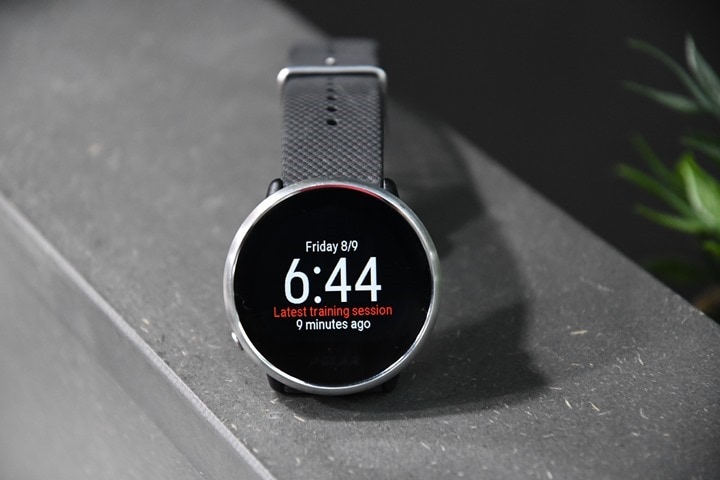
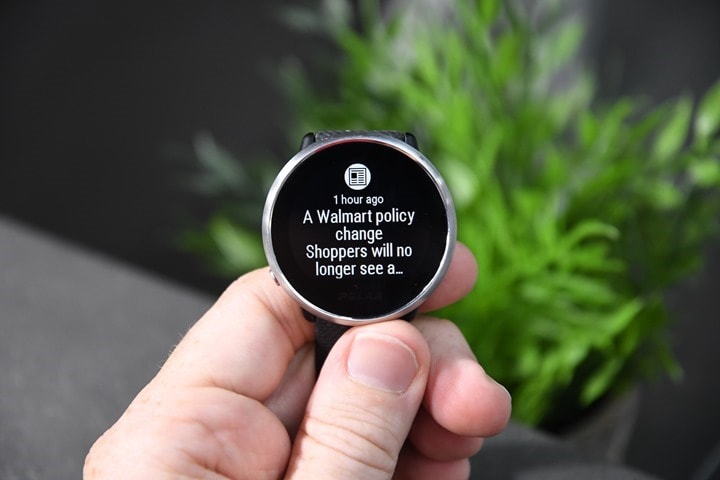
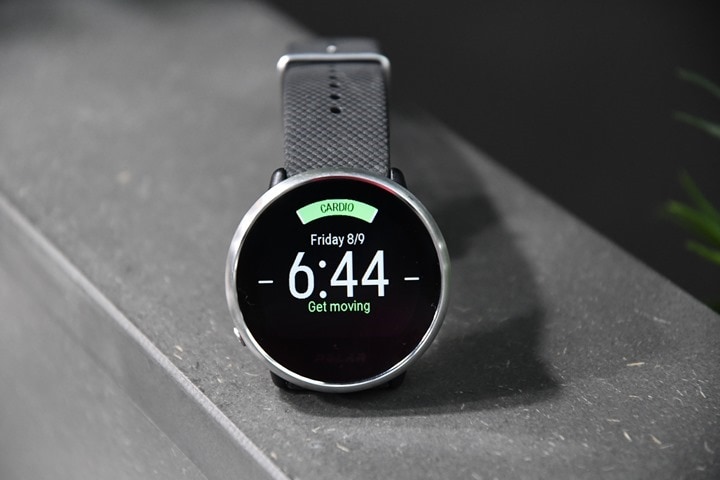
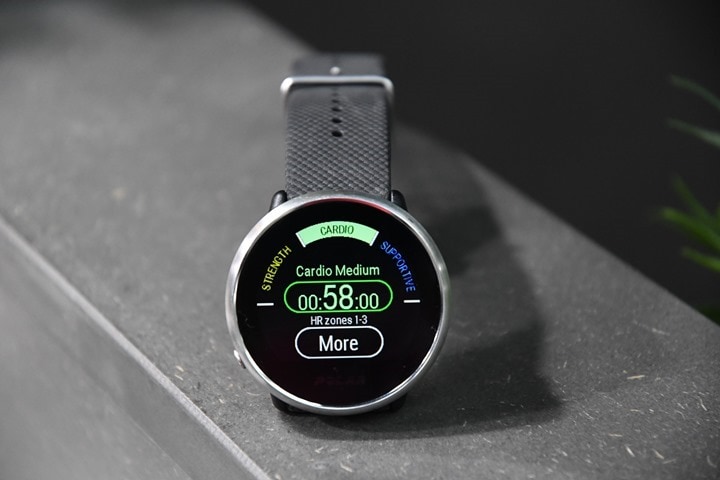
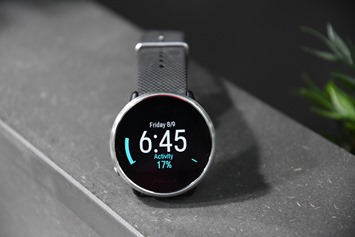
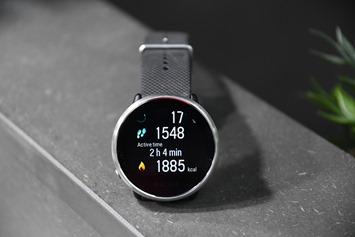
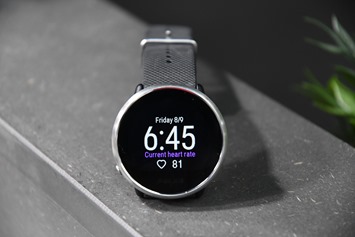
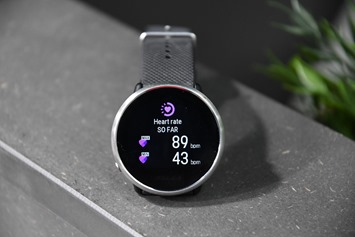
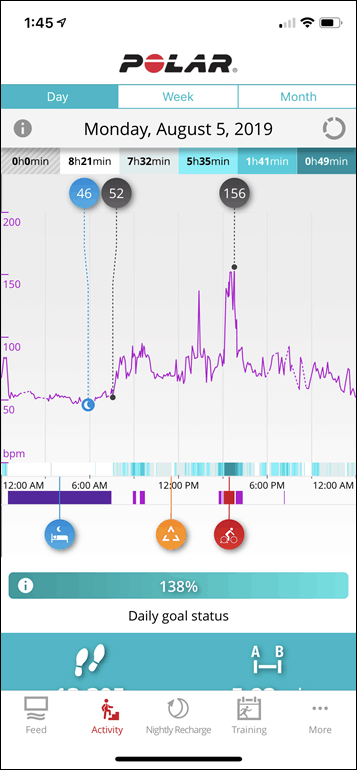
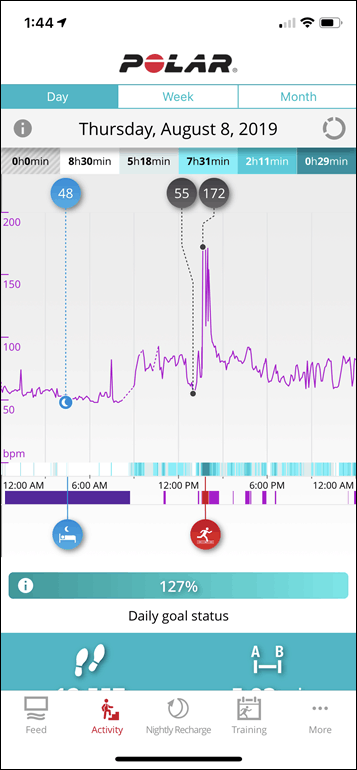
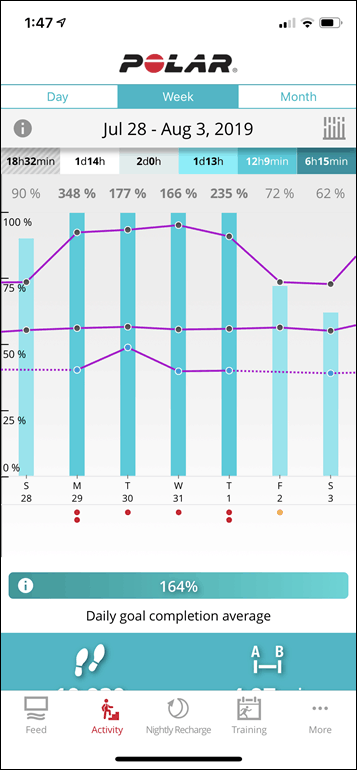
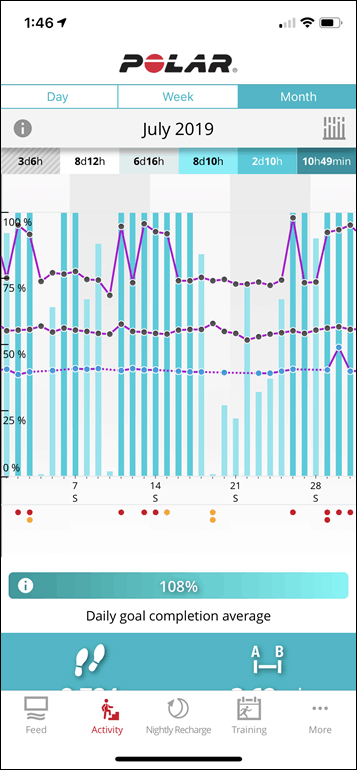
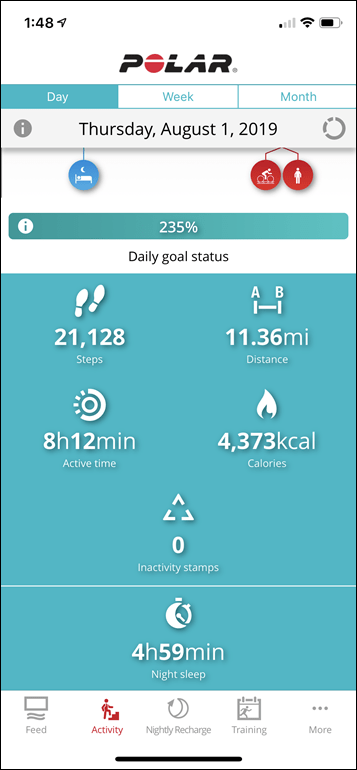
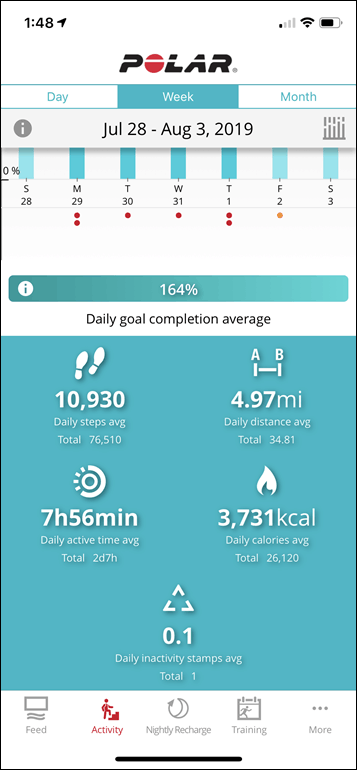
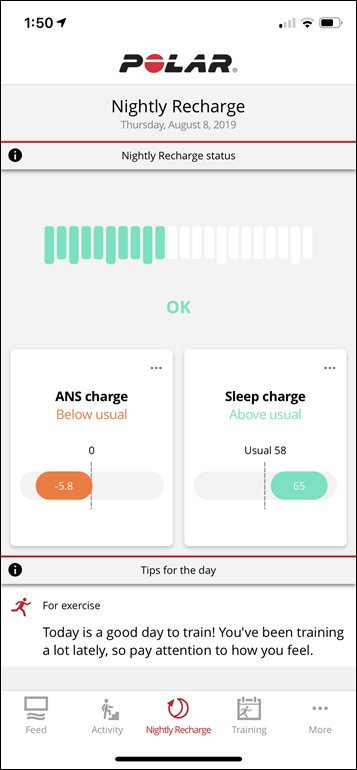
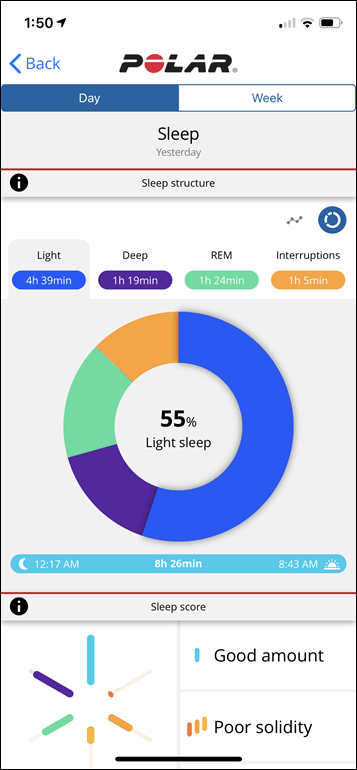
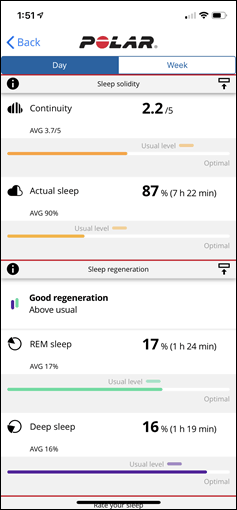
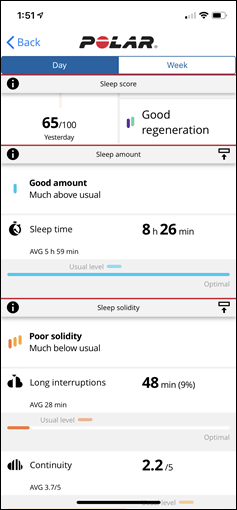
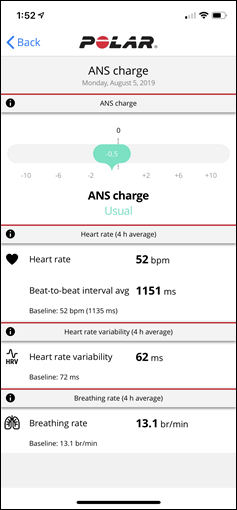
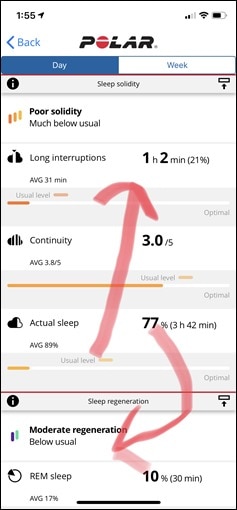
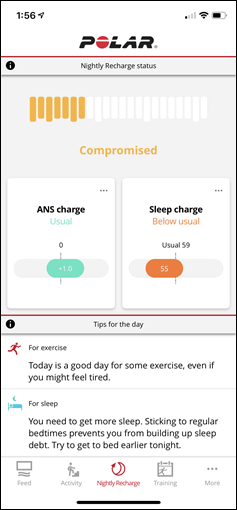

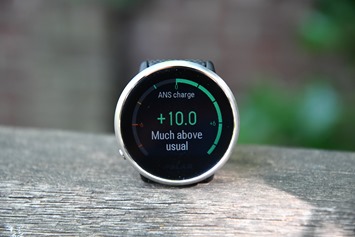
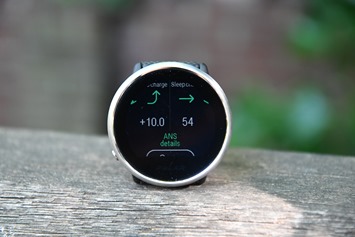
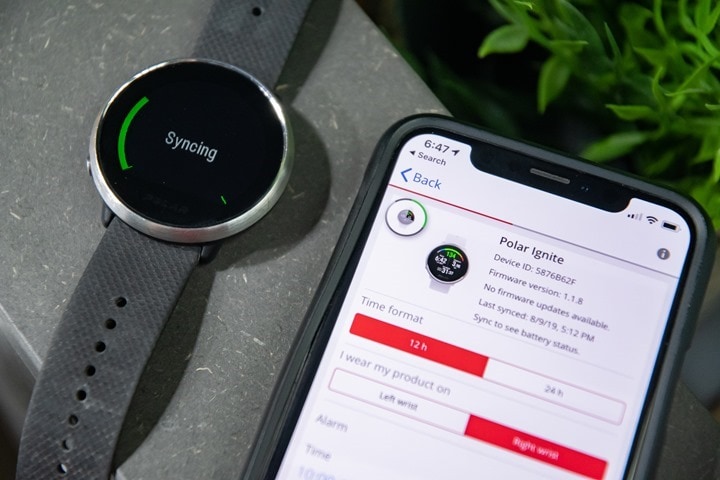


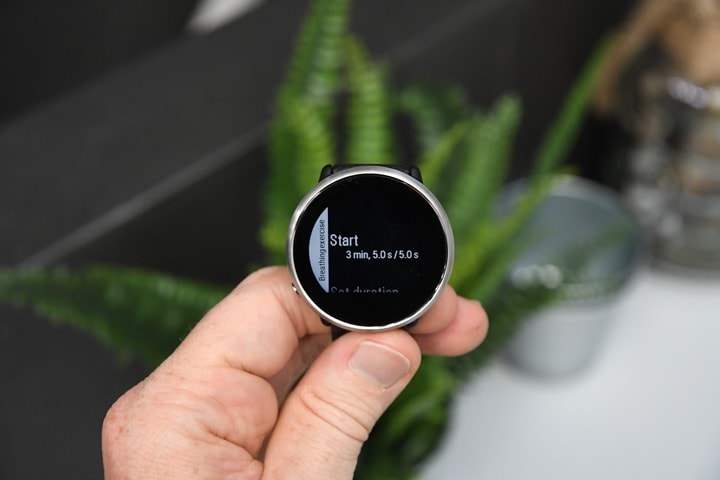
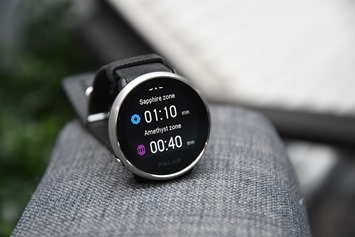
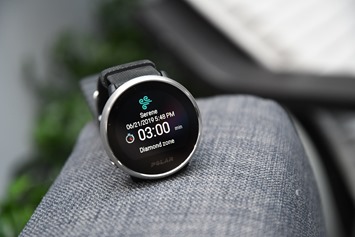
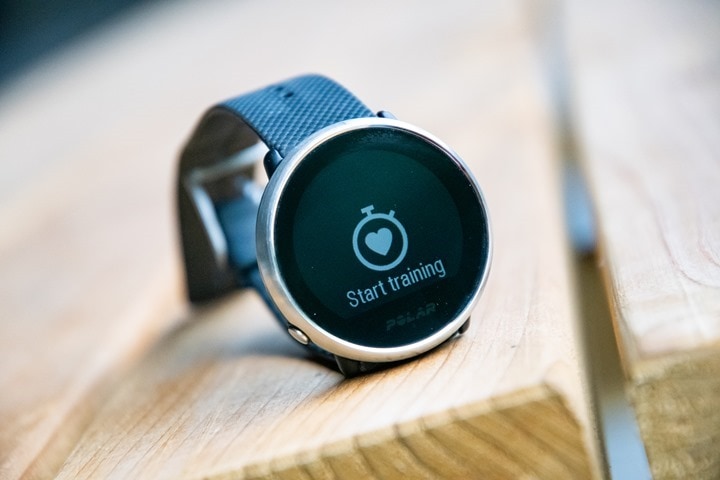
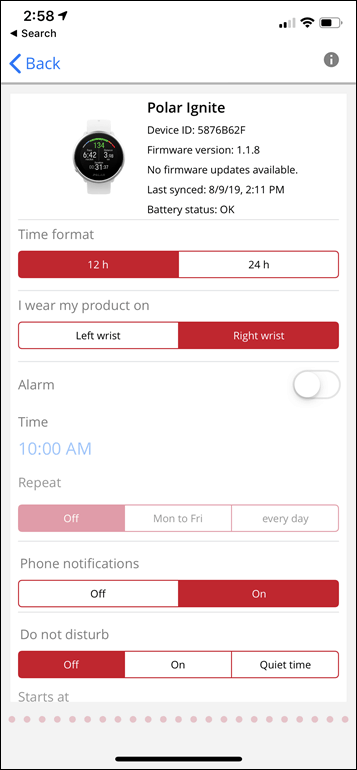
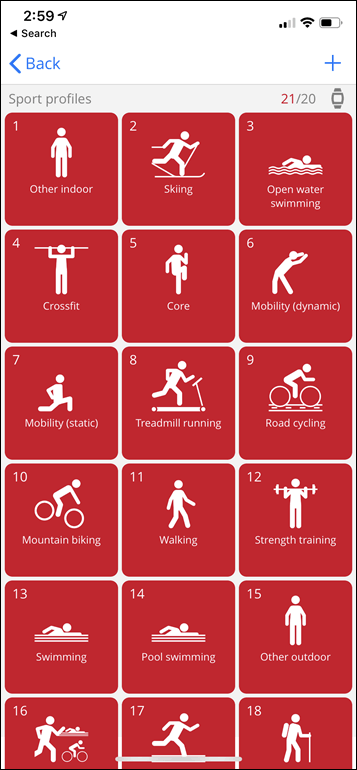
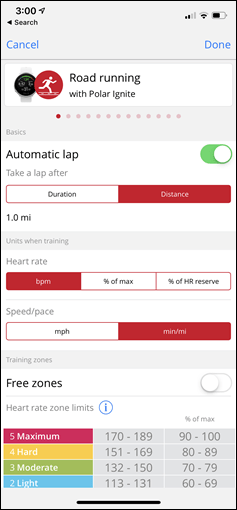

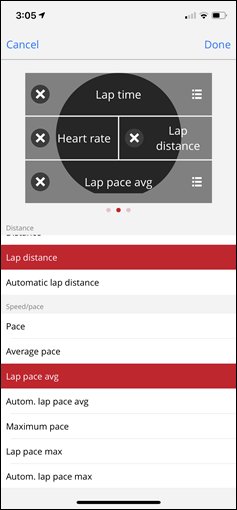
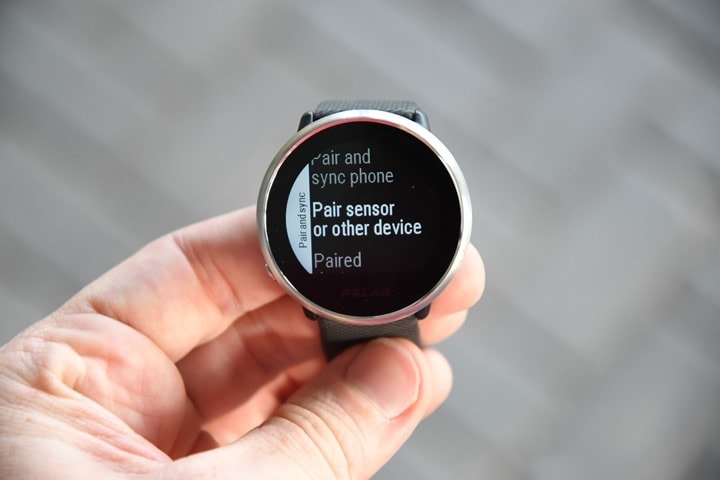
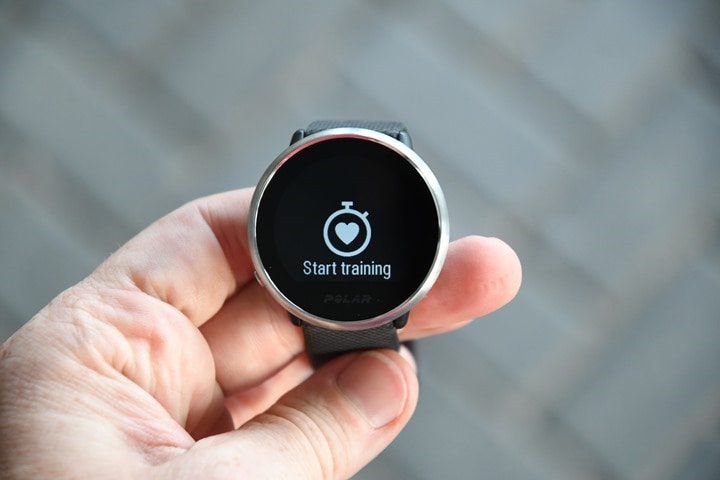
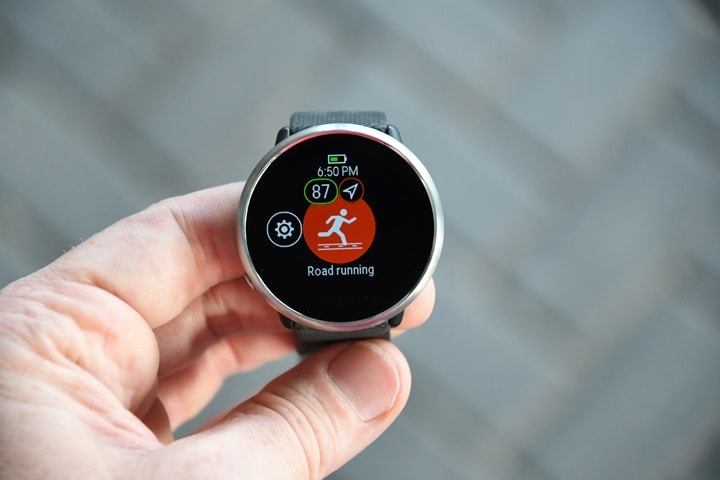

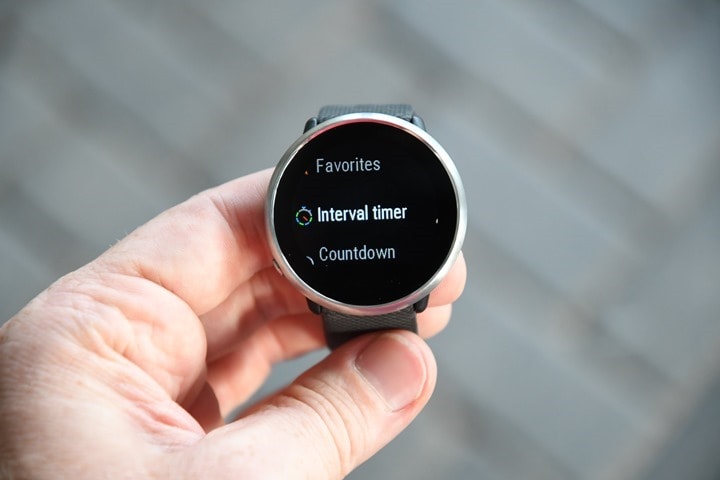
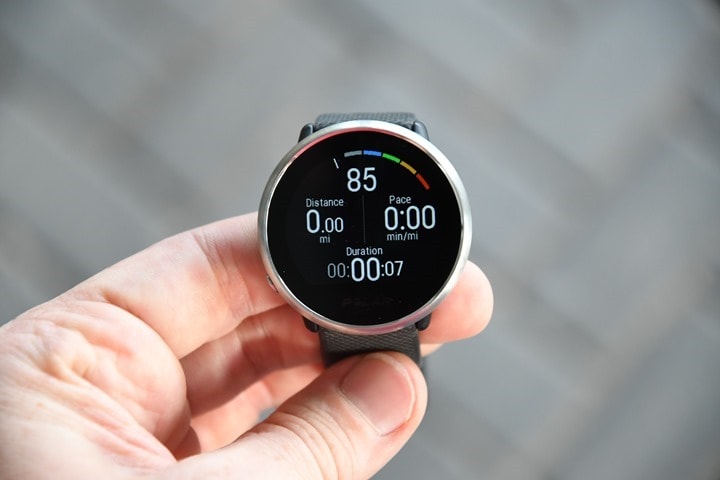
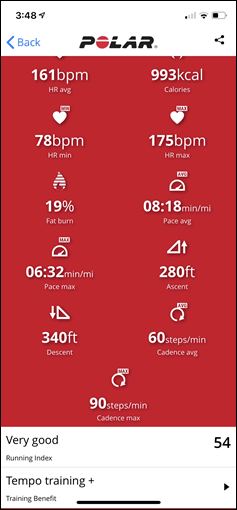
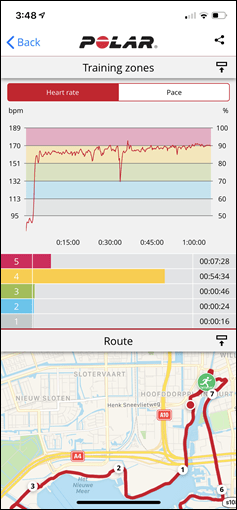
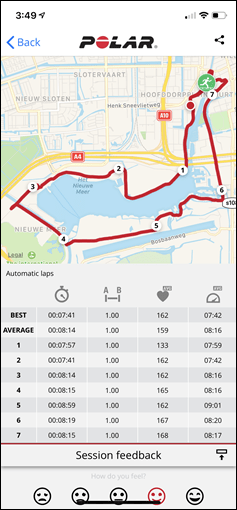

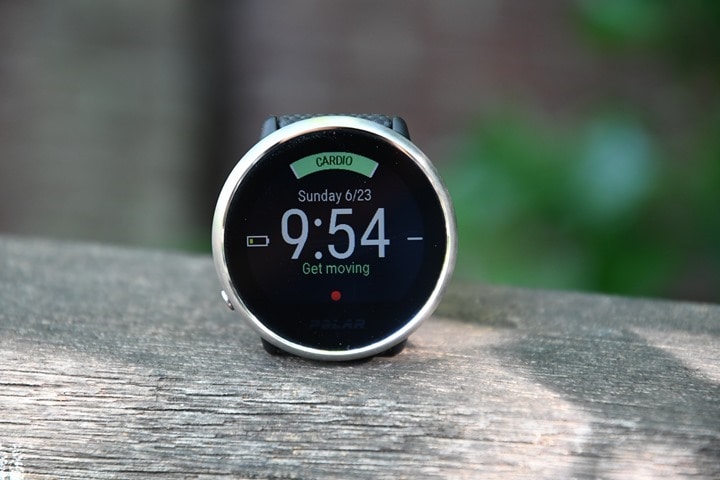
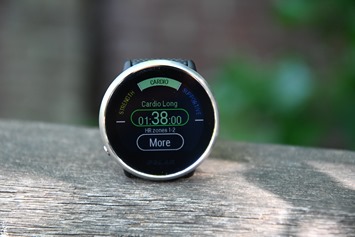
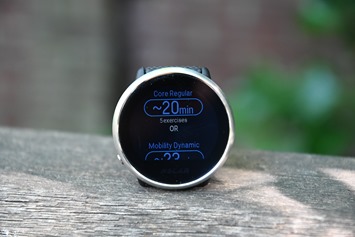
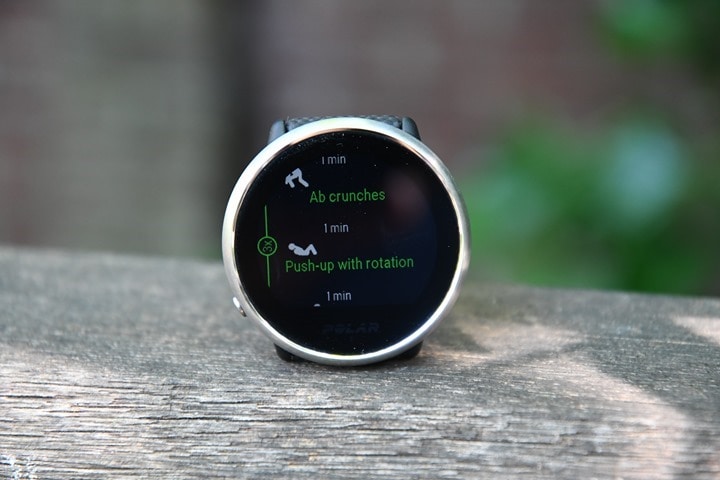
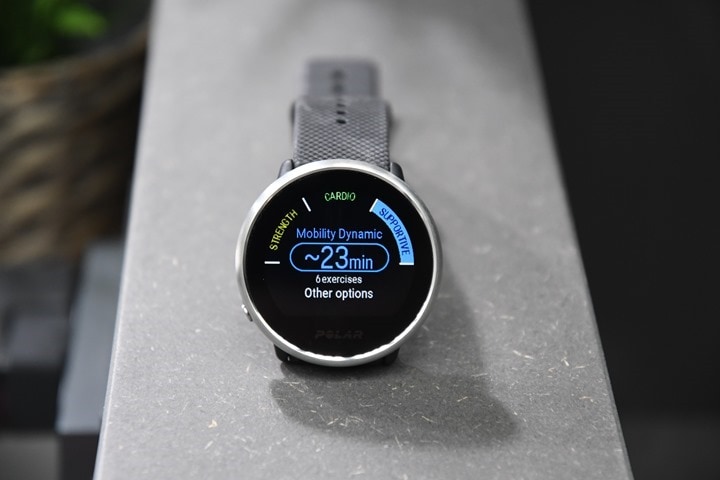
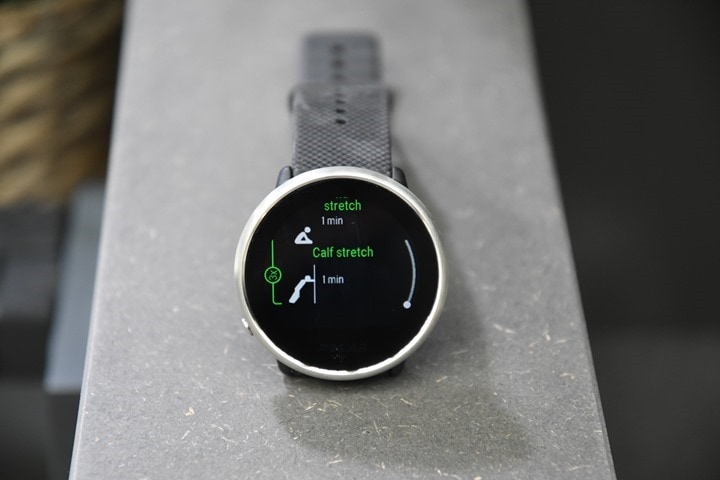
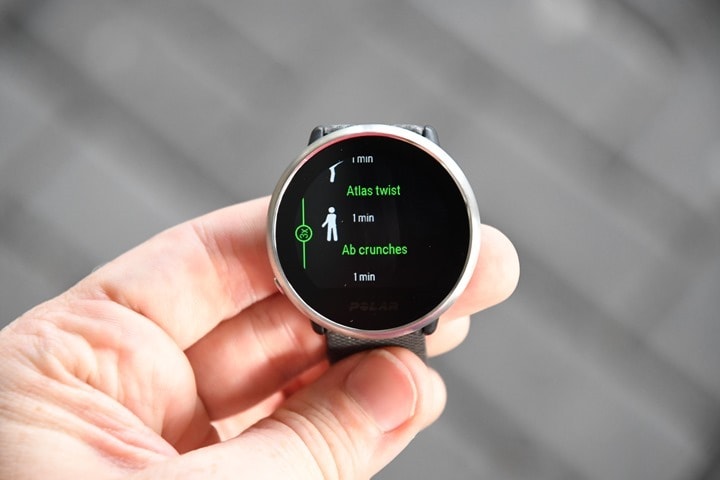
















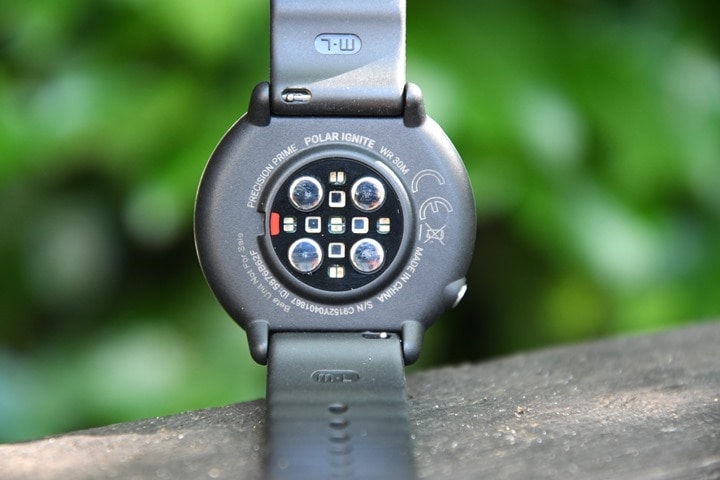










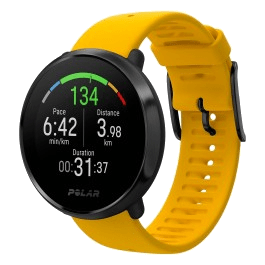
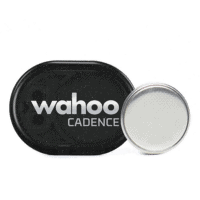
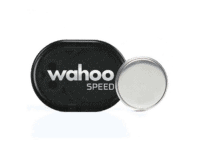

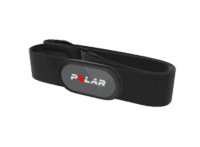
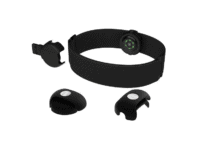
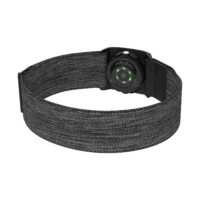





















Well written!
I’ve actually reviewed the watch myself, and find my conclusion fairly similar to yours. I’ve been frustrated and tired of Polar for many years, but this is the first time Polar had impressed me in a long time. I think this is the first heart rate monitor on the market that doesn’t just think of your physical condition, but the overall health.
Will be exciting to see where this is going in the future.
Thanks!
I’m looking forward to see the unique Ignite features getting rolled out to the Polar Vantage M. ;-)
Extensive and well written review Ray.
Great review as always Ray, you’re spot on with your point about this being overpriced, especially since polar themselves has had a couple of 20% discounts on the Vantage M – making it effectively the same price.
One of the pet peeves I’ve had about my Vantage M is that aside from a tiny graphic icon, or plugging it in, there is no way to tell exactly how much battery life is left. While it’s easy to see if your watch is at 90 or 50% power, it’s really hard to discern between 40% and 20% – which makes a huge difference if you are about to head out for a workout. Did they fix this on the Ignite? Do you know if they plan on fixing it on the Vantages?
Yes, sliding from the top to open quick settings drawer shows you an exact battery %
Swipe down in main screen, then you will see the battery life in percent. @Polar would be great to get this feature also for Vantage V.
Does the Ignite support SBAS like the Vantage Models?
I’d like to see the sleep data sync to Training Peaks, so that my coach can take it into account for programs.
In Europa, Vantage M and Ignite have the same price.
Most of new feature are coming in november on the Vantage M.
So is it a best way to buy a Vantage M which have more autonomy and a display always on ?
All you will miss on Vantage V is going to be Fitspark feature
It really depends on ho much you want the features and how much you are willing to wait. Polar are not exactly known for delivering features according to their own roadmap, although that seems to have improved a bit with the Vantage series.
Personally, I would go with the M just for the always-on display and the lack of touchscreen (you should definitely take that one into account to decide, if you do want a touch screen you need to go higher to the V)
I’d agree – I wouldn’t buy a specific device unless there is clear communication that feature is coming from said company.
To Polar’s credit, as Sorin notes, they’ve actually been really good about communicating those features for the Vantage series and hitting those timelines. I don’t think off-hand they’ve missed any timelines on that series. Are they super conservative and probably a bit slow? Yes, but, at least they’re doing what they’re saying.
Thanks, Ray! It’s really a blessing that we have you watching these things and holding companies to their word.
To clarify, I don’t own a Vantage or Ignite (yet), my mistrust with Polar is based on being a fairly early adopter of M400 (and a late adopter of M430 as a result). Although I do have to say they both turned out to be great watches for their price bracket in the end, but getting there was pretty painful, especially for the M400.
Great review again. I’ve been using a vantage m for a while and hope they have fixed swim modes for ignite. In pool mode, maybe it’s the way I swim but it does get the number of laps right and sometimes mixes up swimming style. OW swimming with the watch on the wrist simply does get enough exposure to satellites
Thank you Ray for the very thorough review. One thought (if it’s practical) is to provide a percent variation metric from the average of watches tested or “the gold standard” on GPS accuracy and HR measurements. That will help provide a sense of how much to worry about GPS/HR accuracy relative to other features that the watch has relative to its competitors. Thanks again for the review and especially your reminder about how placement on the wrist can impact HR measurement.
Thanks!
Doing a baseline is tricky because that assumes that we have a gold standard track to work from. If I ran specific routes and then plotted those routes that might work. I tend to run a lot of random routes (somewhat on purpose, because it then means my conditions are far more varied).
For HR, that’s also tricky. Because while someone might assume a chest strap is a gold standard, there’s actually countless times when that’s not the case – especially in the fall when the air is cooler/dryer and the first few minutes have bad connectivity. Or, when cycling with a jersey open. Lots of history there that people have kinda glossed over with the new evil enemy being optical HR sensor accuracy.
Polar Ignite is 200€ product. Why you didn’t compared GPS accuracy to other 200€ products like Garmin Vivoactive 3?
I cover precisely this question in the review, within the GPS accuracy section.
“…the GPS on the Polar Ignite isn’t awesome. It’s not horrible, but it’s definitely great either. ”
Ray, I’m sure you meant “definitely not great either.”
Same experience with the Ignite used in sunny Singapore.
Thanks!
I’m not disagreeing with your pricing assessments. But what value do you place on the adaptive workout suggestions that no other device has? That aspect seems valuable, but potentially difficult to advertise as a value added differentiator. Especially for a consumer comparing features while in the store. Still, I think that the price/value ratio is not quite as skewed away from this device as the summary might suggest. But I agree that, at 30 USD less expensive, Polar might have another nice winner with this device.
Exactly, I think there’s value there – but I don’t think you’d be able to quantify it easily – let alone try to explain to consumer that’s a key selling point.
My pricing assessment was more about the reality of trying to sell this device in the mainstream non-endurance market it’s targetted at. Atop that, the more hardcore reality that virtually all of the other devices in this price point now have music on them, which Polar lacks.
Great review, Ray!
Some additions:
– Backlight during nighttime: You can disable auto backlight with the Do Not Disturb feature. I’ve set it to auto for the night time but you can also use it manually. Works well, same as with Garmin devices.
– Firmware updates via USB: While that’s possible it’s not the only way. In fact, I’ve done almost all firmware updates on Polar devices via the Flow app (OH1, Vantage M, Ignite ans also the earlier M430). While Garmin has streamlined the update process a little bit more Polar has been doing OTA updates for a long time.
– Watch autonomy for Nightly Recharge: From my experience, the metrics are all calculated on the watch. No sync necessary. I’m looking on the sleep stats every morning by tapping on the “Already awake”, confirming and then browsing through the stats… all with flight mode still enabled on my phone. While, with Garmin devices, you get zero information on your sleep without the Connect app. Not even duration.
– Sports mode selection order: These are ordered in the exact way the sports modes are arranged in Flow web/Flow app. Just arrange them to your liking using drag’n’drop and it will sync over to the watch.
Thanks for reading!
– Do not disturb and nighttime. So, it’s interesting – that’s actually something I forgot to mention: Smartphone notification sstill come in when do not disturb is set on the phone (but not separately on the device, such as during a nap midday). I don’t have that issue with Garmin. I’m pretty sure I have my unit set to auto though for night, so it’s weird I still get blinded.
– Firmware updates – Thanks!
– Sport modes – That’s awesome, though, confusing – but awesome to know.
Thanks!
I have a polar relic (v800) but for me do not disturb on the watch is controlled in the flow app solely, maybe the same for ignite?
Funny, I think that the matching order of sport modes on the watch and in the app/web is very logical and natural. All to their own I guess
Thanks for interesting site
But Ray…have you really worn the Ignite for two months and did you actually read the manual?
I mean, you couldn´t even remember the NAME of the Polar Ignite watch on your podcast lol.
How to operate the device and the settings are clearly described here:
“Turn the Do not disturb feature On, Off or On ( – ). Set the period when do not disturb is on. Choose when it Starts at and Ends at. When it is set on, you will not get any notifications or call alerts. Also, the backlight activation gesture is disabled.”
If you get notifications and get blinded by the display at night then you haven´t actually activated the DO NOT DISTURB function described above.
What is confusing about having the option to arrange the sports profiles in the exact order you want? Isn´t that what you want?
“You can change the order of your sport profiles by dragging and dropping them. Choose the sport you want to move and drag it into the place you want to put it in the list.”
Here is even a nice video that shows how this simple and useful editing function works:
link to youtu.be
The Polar Ignite online manual:
link to support.polar.com
Yeah, i don’t think you’re listening to what I’m saying:
On every other watch I’ve *ever* tested/used, setting ‘Do not disturb’ on the phone will not send notifications to the watch. That’s sorta the entire point of it on the phone. Because nobody wants to set do not disturb in two places. Whereas the point of DND on a wearable is to also silence anything else you might have going on – like inactivity alerts or such.
At the end of the day, the watch shouldn’t be getting/showing notifications when I turn on DND on my phone. Period. Whether or not that’s Apple’s fault or Polar’s fault I don’t really know, but it happens and it’s super annoying. At night, Polar DND takes over and it works – but not during the day when I don’t set DND.
As for sport profiles sorting via app instead, it’s great that it’s there. Sorry I didn’t see it – but my point still stands: It doesn’t order by what you actually used. The fact that you can order it via the app (though, it doesn’t mention it there) is also nice, but again, that’s actually not what I said above in the review. But it sounds like you’re trying to swipe away my main criticism there: The swiping action on the Ignite is crap, and the sport profile screen is what shows that the most.
As for wearing it for two months, yup, been on my right wrist since I got it mid-June. You can see that in some of the screenshots too in this review. On the name, it’s actually simple – my brain keeps on wanting to call it the Inspire, for the Fitbit Inspire. Of course, each time my brain tries to do that I know it’s not right. Depending on how tired I am, my brain has to think for an second. Eventually I’ll get it right.
Yes, I´m waiting for you to get it right. And by that, I mean doing both Garmin and non-Garmin reviews in an equally “fair and balanced way”.
Your Garmin reviews are more enthusiastic with a more lenient wording of negative points.
The non-Garmin reviews tend to be a bit more harsh with a bit more snark.
Is this bias because you´re invited to Firstbeats (used by Garmin, Suunto etc) conferences? Do they pay for your trip and wine and dine you? Do you get a speakers fee?
It really would be interesting to know.
Because it is quite obvious you are NOT on Polars payroll.
Your reviews are very entertaining to read and quite educating. I just wish you could be unbiased when doing them.
I suspect that because you run a Facebook site called ‘Polar Ignite Users’, you’re probably a bit biased in how you’re reading into things. Like it or not, the issues I noted are real. But I also think the watch has lots of great points/features, as noted.
As far as snark, my level of snark is way higher in Garmin reviews than non-Garmin reviews. Seriously, go read them. Turn on whatever snark detector you have, and you’ll find I give Garmin a far harder time for slightly implementing something quirkily that other companies don’t even have. Again, actually read the reviews – stop skimming.
As for conferences – I pay for all of it, thanks. I pay for my flights/hotel/cars/food/etc. If there’s food as part of the conference (lunches), I’ll eat that – though oddly not always. For example I didn’t at FirstBeat this year as I missed it. In fact – when conferences have a speaker fee I give it away to a charity. Btw – That’s the same when I go visit Polar, or Garmin, GoPro, or anyone else.
If you think this is some super-negative review, then again, you’re way overreading things. If it was so negative, I doubt Polar themselves would have retweeted it this morning.
Good!
I don´t own a Polar Ignite but I do co-manage the Polar Ignite and the Vantage Users group along with Oura ring Users group and a general fitness trackers group. Full disclosure on my part too ^^
Thank you for disclosing that you have no financial ties to Firstbeat, ANT+, Garmin or any other companies. Maybe you should have a section on your site that states that clearly. Just a suggestion.
My snark-detector sense differently lol but hey, it´s your site and your reviews. I´ll always read them, and the5krunner and Titaniumgeek because you all write enjoyable reviews.
Could you try that again without the snark? Thanks.
Wow, I did not know you gave your conference speaking fees to charity. Bravo.
I don’t think anyone would find it objectionable if you kept them. You earned them.
I think I had always sort of assumed your expenses for expos and conferences were paid by the organisers too.
It’s funny how some people think Ray has all this Garmin love. You should read his Garmin Vivomove HR review where he says it is essentially unusable because the screen can barely be used outside. After reading Rays reviews for years, I second the people who say there are very unbiased, but just the mark of someone who has used sooo many products in this industry. I too have used many and sometimes do question his support of Suunto which I am slowly possibly liking more despite having a terrible app experience (heck I can’t even find a way to use multiple Suunto watches). But I have NEVER ever thought even once he had all this Garmin love. Ray is great at calling it like he sees it which is what I love about his reviews. Keep it up Ray!!!
I have been wearing/running with the ignite for the past 3 weeks. Your review is spot on – with one significant exception: GPS accuracy. I know you don’t hold your punches on any manufacturer, and you take some fair shots at Polar here, but even so I think you were a little soft on on Polar as far as your conclusion on GPS accuracy is concerned. The GPS on my ignite IS HORRIBLE, absolutely abysmal. The worst GPS of any watch that I have run with over the last 3 – 4 years. It is not uncommon for the GPS to be 50-100 meters off track at multiple times throughout a run. I could live with the slow to wake display and wonky touchscreen given the excellent implementation of nightly recharge and fitspark – but GPS this bad is unacceptable and ruins an otherwise great effort by Polar.
Have to second this, mainly to assist others considering a purchase.
Had the watch two months now. Really like the look and slim feel, plus think the app and website (especially) are great.
However, the GPS is pretty much unusable for running training. The instantaneous speed is generally catastrophically inaccurate – often 45 – 60 secs off the pace – and there are significant delays in picking up change of pace.
If you plan to wear it as a daily activity and sleep monitoring device then I would recommend it, if you are even a semi serious runner and require a somewhat realistic indication of your current pace then suggest looking elsewhere. Its a shame, I really want to like this watch more.
Out of interest, are the more pricey units more accurate ?
I have owned numerous Garmin and Suunto devices and never had issues like this.
Thanks for the reviews mat and thanks to other users for constructive comments.
Thanks. I ordered the same day your YouTube video came out. I love the Nightly Recharge data but am frustrated with FitSpark. It gives me the exact same workouts continually.
Once again Thanks for great balanced review, been following the blog for many years. It’s always great to see you suggesting on how the products can be improved further. Companies would be wise to listen to your opinion.
Thank you for the in-depth review, Ray!
Personally I have returned my Polar Ignite after 4 weeks as I was unsatisfied with both the GPS and optical HR performance, especially compared to my Polar V800 with H7 strap.
I am currently using a Polar Vantage M, which seems a better successor for me – and am ready looking forward to the promised Octobre update bringing Sleep Stages Plus and the other new fearures (except FitSpark, which I won’t miss) to the Vantage(s).
BTW Regarding breathing rate from HRV validation: Polar claims they have performed a validation against polysomnography – but havn’t published the study yet.
No manual lap – yikes! That’s a dealbreaker right out of the gate, and a real miss by the design team. Seems to tie back to what you noted about their perception of who the audience would be for a watch like this. I can think of plenty of folks who might be interested in using the adaptive workout recommendations, but who would ALSO like to head down to the track and crank out some 400s, and track them appropriately, without having to pre-define a workout to execute them against. That’s a real head-scratcher.
yeah, that’s my main issue as well. The auto-lap is basically useless for swimming…
Combine that with no cycling sensor support and this is a really limited watch.
Hi Ray and community. For the gps accuracy, I couldn’t find anything regarding the difference in the actual distances measured at the end of the workout. I can understand the differences in the accuracy of the plot lines, but does that by any chance wash out in the end? I, like most users I imagine, are probably mostly concerned with whether it’s accurate enough for use with Strava segments and total distance/average speed. Thanks as always for the great content!!!
Ray doesn’t ever take a dime from any company or influencer and always buys his own products if he chooses to own them? Wow when did that happen? I can’t believe this is not a big bold disclaimer either because I know that in reading the multi thousand reviews over the last decade or so…I’ve only ever seen him mention it oh like 752 thousand times……..?
He receives plenty of dimes from the sales of products through his affiliate financial deal with the clevertraining company.
That is no secret and I have no real problem with that because I factor that financial agreement in when I read the reviews on dcrainmaker.
The more units sold through a positive review, the more money into Ray´s pockets. It´s not like he´s doing this for free you know. It´s his livelihood.
Wow, you really come across as the jealous sort. So many different professional ways you could have handled your comments and instead have chosen to insinuate that Ray is somehow not being truthful, and even worse yet has an underlying bias. I’m not sure if you receive support from Polar for your work with the user groups you state you co-manage, I hope Polar does not think you are an “influencer” because your influence is only negative to me so far.
As far as your CT insinuation…I think the most important point you’re missing is that we have a choice of where to purchase. It is not like having an manufacturer paying him for units sold. No one HAS to buy from CT. CT spends their marketing money with Ray and Ray advertises that CT is a good place to do business with, but leaves the choice up to us. PLus he has always disclosed his relationship with them as well.
Sour grapes Mate, all you have is sour grapes.
Which would totally negate your point about being biased. If that was true all Ray would need to do is churn positive reviews and watch the Dow roll in rather than critique products. Such petty comments like yours appear here from time to time but don’t hang around.
Please review the Whoop. It offer some of the same overall health features that the Ignite does, including detailed sleep analysis and HRV. I have read elsewhere where you state that you are skeptical regarding the whoop HRV accuracy, but please consider that apparently there are Major league sports teams using it. BTW I use a Garmin Fenix 5x plus, OH1, and the Whoop as well. Impressed with the quality of your reviews, which is why I would like to see you review the Whoop – would like some independent verification that the whoop is or is not accurate.
I ordered one in late July. It said I think 3-4 weeks for delivery. So assuming in the next few weeks, I think for a device like that I’d really have to wear it for about a month at a minimum to start validating any of the metrics. Thus probably an October review. Roughly.
Ray,
As usual, thanks for the thorough, hands on review. I appreciate your input over many of the other reviews that I read. I feel like I am getting a much more honest review here.
I sure hope they port the fit spark feature of the ignite over to the vantage watches. Regardless of the fitness level of the one wearing the watch, it would be great to have those suggestions available. I would plunk down the money on one of the vantages for sure if it had that feature. That and the added battery life that they have over this ignite would be a win win for me.
My V800 is on its way out now. The battery life is noticeably different over the last couple of months and I am looking for a replacement. I was an early adopter to that one and I wish I had not been. While the features on it were great, there were many issues over quality on it. My first 3 lasted a total of around 39 months. The last one has lasted the longest out of the bunch and they replaced it for me out of warranty which they did not have to do. Kudos to Polar on that. Because of the issues I had with the top of the line watch is one of the reasons I wanted to wait on their new ones. I am hoping to get one not requiring frequent warranty repairs.
Hello Ray and community.
I do crossfit on a daily basis, and though I am not aiming at becoming a pro, I just want to track my HR and calories burned, to see how i am doing.
Would you say in this case the Polar OH1 will be much more accurate than the Polar Ignite?
I’ve read that write based HRM are really not accurate for crossfit, and while I don’t want a chest strap, I was wondering of a Arm Band HRM would do the job well.
Of course, If the Polar Ignite would be as accurate as the Polar oh1 during crossfit, I would rather spend more and get the watch.
thank you!
Stefano
The OH1 will be much more accurate than any wrist-based HRM
Yeah, I’ve found the OH1 more accurate than the Ignite, mainly due to the separation from the wrist. Even in general – I think the OH1 is one of the most accurate units out there period.
thank Ray!
so for crossfit (I dont want you use a chest strap), the OH1 would be more advisable than the Ignite.
Have you used the Ignite for crossfit-like workouts?
thank you! I assume it is due to the position itself..
Correct, to the position I’d recommend using the OH1 over a wrist-based sensor.
Is the Night Recharge Feature not something similar like Body Battery of Garmin, since you mention Garmin don`t have that feature?
Yeah, if you had 5 seconds to explain the two, they appear similar. But under the covers it’s more nuanced. For example, Polar’s Nightly Recharge does as it implies – works at night. Whereas Garmin’s will actually ‘recharge’ even while sitting on a touch or during a nap midday. So that’s positive.
On the flipside, Polar’s at first glance does the ANS pieces whereas Garmin doesn’t appear to. At least directly. It was funny, after my initial Polar Ignite post, FirstBeat came back with a ‘not so fast’ on the breathing rates bits. I noted that Polar was using it, but neither Garmin/Suunto (via FirstBeat) was. Apparently, that’s not entirely true.
FirstBeat is doing some breathing rate estimation (which, based on the wording I believe is quite different than actual measurement, so perhaps I was still right, or not). They then in turn do some ANS related estimation. In fact, they even have a whitepaper on it: link to assets.firstbeat.com
However, this gets to the next bit – which is that Polar actually leverages all of this information for guidance the next day. Which at present, there’s no tie-in between Garmin’s Body Battery and sport-specific guidance (again, unless FirstBeat isn’t telling us something – but since I mentioned this to them when I visited them back in May, and nobody said otherwise, I figure I’m safe there).
I think both recharge metrics are good steps forward. Neither is perfect. But at think at present, Polar has the edge (at least in terms of leveraging that recharge data). But best I know they haven’t published anything, whereas FirstBeat does tend to publish a lot of papers (which one can still disagree with, but hey, at least the data is there to disagree with). Either way, I like where things are going.
So comparing how the polar ignite and for example the suunto 3 fitness measures recovery what are the biggest differences? Does the suunto measure naps/couch-time during the day? not just the nightly recharge like the ignite? You said that the ignite uses the nightly recharge for the next day which garmin doesn’t how about the suunto does it use the collected recharge data (night and day) the next day?
It’s similar up to a point, Garmin uses hr and hrv both licensed from firstbeat. Polar have added in respiration rate to their own calculations to see how quickly your body slows down/relaxes
No manual lap? Really? By, bye, Ignite.
AW has powermeter support for iSmoothRun, works quite well. Maybe update the spreadsheet?
Using the Garmin 945, I find the (sleep) data poorly leveraged at this stage, the AW AutoSleep app gives me a much more accurate view of how my night went.
Finally Elitehrv iPhone app tells you to go hard or rest, while it doesn’t really correlate with what I experienced. So if Polar has a “working system” I’d be delighted to try it! (Never went back since my great Ambit 1…)
Great review, Ray, as always. After two months of daily use with Ignite, I have gone back to my Apple Watch 4 and 935 combination. I have been using the Oura ring for more than a year, and although the Ignite was reasonably efficient at analyzing sleep data, it still fell short of the Oura ring for consistent accuracy day to day. Fit Spark is intriguing, but it is clearly a work in progress. The workout suggestions are interesting and thoughtfully planned, but I experienced several failures when it failed to recognize an intense strength workout, and then suggested strength the next day. But, as you pointed out, they are onto something big here, and it should get better.
I think Polar is missing the boat by not developing Fit Spark for the Vantage series. They are assuming this feature is only interesting for the casual/intermediate fitness enthusiast. Huge mistake to not include your most creative, groundbreaking feature in your high end watches.
Thanks again for all your work. I have far too many watches as it is, but I’d have many, many more without your incredible reviews.
Mark
Thanks Mark – appreciate it!
And I suspect we’ll see Polar integrate Fitspark into the Vantage series at some point. Once they sort out the best way to do that.
I’d rather they sort out how to make Recovery Status work with Pro. As of know it’s neither here nor there. Recovery Status has always been a very handy adaptive guidance tool, with my V800 showing me not only the status but also how long it takes until I will have reached a balanced status, which according to Polar means sufficient recovery to do another quality/hard session. Now, however, Recovery Status is only accessible in Web Flow, and unfortunately Pro on the V does a very bad job of providing actionable guidance throughout a day due to its single-point measurement versus the ever adapting Recovery Status which takes daily activity + workouts into account as well, thus changing on the fly (in 2-hour increments). Pro only looks at your HRV+HR in the morning and doesn’t change until 24:00. That’s not how my or anyone’s body works. What about athletes who do multiple workouts a day? When I do an easy warmup run in the morning, and then hit the tracks early afternoon, Recovery Pro won’t have changed one bit. What about a shakeout run before dinner/bedtime? With Recovery Status on the V800 the information was readily available, and proactive! Recovery Pro, despite its “pro” moniker, works retroactively. It’s basically an automated Rusko-Orthostatic test. I know I can look up my Recovery Status on Web Flow but why do I have to resort to a PC/Mac for functionality that is as basic as recovery hours on my 935? Especially when the former flagship watch, the V800, had it. They could at least put it in the Flow App.
I think it’s funny how Polar tries to direct you to Cardio Load Report on the Recovery Status page, even though I always click it away. Recovery Status and Cardio Load Report are totally different things.
Add FitSpark to the picture, and there will be quite a bit of confusion. I cannot see Recovery Status, Recovery Pro, and FitSpark working in unison.
I really don’t get why companies decide to have a mainly touchscreen interface on a fitness device.
Don’t get me wrong, touchscreens are handy, but also useless or often detrimental when they can’t get an accurate capacitive signal. Wet (sweaty) hands, wet watch, gloved hands, moving hands (well, technically all fingers); are all places where touchscreens just fail.
A shame about the GPS too.
Touch screens are the cool kids thing to do these days.
A sport version (Polar Ignore Sport) with buttons will sell really well. Add in better back light control or a transflective display, a GPS fix and a $199 price tag, and Polar will have a real winner .
Hi,
I have had the ignite now pretty much from when it came out and been wearing constantly. I switched from the M400 as i wanted a prettier watch to wear daily. I like the way it looks but i find it very inaccurate compared to the m400 in several areas which is incredibly irritating.
How did you find the speed accuracy when you did runs? This is one of my biggest issues and would be interested to hear what others have experienced or whether its my unit being faulty. I wore the M400 as well for a good chunk of time to compare the two. I find when running the speed the ignite says im doing jumps around a lot! It doesn’t hold very steady from second to second. This is particularly obvious when going through trees, im presuming it GPS based and the GPS is struggling massively. The average speeds for lap times were very accurate to that of the M400 i was comparing it too. But the max and min speeds were way out as well as the speeds when running and looking at it. The M400 will hold a fairly consistent speed, changing gradually, the ignite jumps all over the shop. t is not uncommon for my max speed to be between 2-3min per Km according to the Ignite! When the M400 was 6min/km. I will look down when running and see if saying 9min, then suddenly, 7min, then jump again. When trying to run to specific speeds its very very difficult! It trees it often head up to 11min/km when the m400 was holding firm at 7.5min/km. This is a massive issue and wondering if others have seen this behaviour?
The other thing is its massive overestimation of calories used. Its a good 15-25% higher than the m400 which having used that for several years im happy is pretty accurate. Polar have repeatedly said its due to the HR sensor and it being more accurate. I turned the HR continuous sensor off to make a straight comparison and it is still way too high. Polar just keep ignoring me and saying the same thing over and over. Whatever you do don’t use this watch to help a calorie controlled diet plan as you would be putting on a lot of weight. I find as an activity tracker its not great. But with the gps issues above as a running watch its not great either.
TBH if the M400 didn’t look so awful and unable to switch the chunky strap, i would have switched back straight away. But i love the ignite look and i have a pretty soft strap on it as well so it looks like a watch not a chunky block like the m400! I do like the sleep data as well. But i feel the inaccuracy in the calorie burn and the GPS issues as well as the incredibly slow and irritating way you cant get the screen to turn on when you want i wouldn’t buy the watch again. Also find the battery doesn’t hold brilliantly but it does charge really fast so not a huge issue.
Be interested to hear others thoughts on the GPS issues i am having as considering sending it back to see if there is a hardware issue at all.
Mel
I’ll see if I can shoot a video with the live pace bits. I didn’t tend to hold it up very often, since honestly with the whole non-always-on display thing, you just end up doing glances occasionally since it’s so laggy for the screen.
I stuck the constant display on during training as i wanted to see what pace i was doing and frankly the screen turning off drives me mad when running. Im working on pace for my upcoming half marathon and finding it incredibly difficult as getting such rubbish data from the ignite on pace with it jumping around. I have to wait for the end of the KM to then see what the accurate pace for the KM actual was as the average seems pretty accurate but the point data looking at it really struggles.
I am a mountainbiker. The last three years I did an alps cross tour in the summer. So I started in January / February with a goal and a training plan. But once the tour was finished I did not have a goal anymore and neither a training plan. So the form I had build rapidly broke down and with the beginning of the new year I had to start from scratch…
That´s why I was excited when I heard from the ignite and that it gives you daily training advise based on your fitness and recreation level. So I bought the watch finished my tour and after the tour I followed the daily advise. So far I am quit happy with that and I have the feeling that maybe next year I can start my training on a higher level.
Following the discussion about the Ignite here and elsewhere I see that a lot of people compare the hardware and software features with other sport-, fitness- or smartwatches. I think that does not do justice to the Ignite. From my point of view the Ignite is completely different device / tool. It is not a sport. or gps watch that logs exercises with tons of data for the user to analyse. I see it more as a digital coach. If you assume that coaching being the core feature of the watch all other hardware and software feature have to be judged by how good they support that core feature. And by doing so I think Polar really did a great job. From that perspective it does not matter if the device has music or not. Even the gps accuracy is more or less meaningless as the coaching is based on heart rate and not distance or pace…
The nightly recharge and fitspark functions look useful! I’ve always found sleep metrics o be a little.. useless? I had this many hours deep sleep, this many light sleep, etc.. ok is that good or bad? Nightly recharge looks much more useful
Glad I’m not the only person who regards sleep data that way ?.
The polar ignite is (imho) a very specific device. Not the best not the worst like it’s said in this review.
If you don’t need/want fitspark (and nightly stuff) i’m pretty sure the ignite is not for you as it is the most important pro.
Touchscreen is really painful, and the gps is far away from any track or road (like a couple of decameter away).
Just a little clarification about the «compromised» night, it’s just a «status» somwhere between «ok» and «poor»
link to support.polar.com
Sometime translation are way better than the original (if english is the original for polar software) : « L’état Nightly Recharge présente l’échelle suivante : très faible – faible – moyenne – assez bonne – bonne – très bonne. »
Thanks for the review,
I’m currently on the fence between this (or the vantage M once the october update hits) and garmin’s fr245. How would you compare the Training Load analysis between Polar and Garmin/Firsbeat? (or could you point me to someone who may have done such comparison?)
thanks
Do you think the Polar Ignite will make it to your Winter 2019-2020 Sports Technology Buyer’s Guide? And if so, under which category?
Probably under mid-range all-arounder, if anything. But as noted, the next month or so is usually ripe with new watches. So the night be young still.
Thank you! I’ll wait it out then. ST
Thanks for the review.
I got the Ignite after your preview, mated it with a nylon/velcro strap mentioned in the comments of the preview and have been pretty happy since.
I got it mostly for the “nightly recharge” aspects and planned to whip out the great FR935 for all running/cycling activities on my right wrist. To keep GC+Strava and the reliability of the HRM4 (but the OHR of the Ignite has been surprisingly good, a ton better than the FR935’s) and also because for any king of intervals the lack of manual lap on the Ignite makes it useless. ANS recharge is a lot more convenient than using a smartphone+HRV4training and has given me some interesting insight. Oh and it “forces” me to sleep a bit more ;-)
I was mildly interested by FitSpark too but I’m not as enthusiastic as you. The easy runs it suggests always seem way too long (and have odd durations, 58′ instead of 60′ minutes for instance, what gives ?) and the other exercises are always the same. So maybe it looks at “Load+Recharge” but its suggestions are rather generic.
The flipping to activated the display IS annoying (hit and miss and slow) but you can press the button and it’s a lot faster.
Ray,
Thanks for the extensive review. I have used the ignite for a little more than a month. A much simpler experience than using the Garmin 645. Maybe less information, but more ‘actionable’. As soon as you wake up it already gives you a good idea on what you can do that day (it also detected I was getting sick almost before I noticed it. As my ‘activities’ include a (speed)bike commute of 2x 1h40 the battery was the pain point. The evening before always making sure the battery was topped. On the other hand, I enjoyed the suggestions for running on the days not using the bike. These suggestions made a lot of sense (even for me as a beginning runner with a lot of weight to carry around)
With the Garmin I get boatloads of metrics. For instance I now try to consciously do the hrs test every morning, but this results in just another figure like so many of them. No integration let alone any recommendations (death by a thousand cuts? ? ). So now I’m seriously considering moving towards a vantage series (V?), but still pondering the usefulness of this for my use case (the lack of fit spark…)
I’ll keep reading the blog ? and maybe I’ll find what I think I need.
Many thanks!
After weighing the different options and trying to see how they fit into my life/fitness activities, I’ve decided to switch over to the vantage M. The V is overkill for what I do with it or at least I can not justify that cost :).
Thanks again for the insights and detailed reports.
Why do you want to switch to the Vantage M if the Ignite is giving you the actionable suggestions you like? Why not stick with the Ignite?
The battery of the ignite did not inspire that much confidence en required to much attention (always looking for charger and power outlet…). At least in my use case when I use it to track your cycling commute that can take up to 3-4hrs per day.(next to 2-3 runs per week). But otherwise little to complain about the ignite.
That’s what I also thought as a runner at first but quickly got a Vantage V as well, with the M gathering dust ever since. They might not differ much in terms of functionality but it’s the little things that kept annoying me with the M, stuff that was never focused on in Polar’s marketing to maybe not differentiate the two models too much. For instance the band. The V’s band is just so much more comfortable because of its grained texture, and a half-framed buckle, vs. the frame that extends behind the bar on the M. Paired with Polar’s standard strap attachment (seen on M400,430,600,V800,V) the V wears much better than the M with its flimsy quick release. The real difference in build quality, however, beside the stainless steel housing, is the glass. The V’s glass has hydrophobic coating, completely undocumented, which I noticed the first time I took it under the shower. It’s a subtle “premium” detail but improves readability in wet conditions quite a bit- swiping across the screen to get rid of droplets won’t leave streaks like on pretty much any other sports watch. The barometric altimeter (also thermometer, another undocumented feature!) is pretty accurate, much more so than my 935’s, and in my opinion more useful than a GPS one, especially when you bike/run a lot under tree cover. Last but not least: Sound. Don’t underestimate the disadvantages of not having sound in addition to vibration. Especially in Winter when you wear like 3 layers of sleeves I couldn’t feel my M’s vibration alerts. The V has vibration and sound with adjustable volume (quite loud at highest setting!), letting everyone in a 20m radius (it’s that loud) know that you’re out of your HR zone or about to change workout phases. ;-)
Anyway, it’s your money, and I get the overkill” argument. I also learned the hard way and got a M200 which I upgraded to a M430 a couple days later, got a 735 which I quickly upgraded to 935, and an M which became a V- all within a year and a half. I lost quite a lot of money in doing so because of our strict (i.e. non-existing) return policies in Europe. You know what they say: Buy cheap, buy twice.
I have a 935 and I’m considering the Vantage V and 945. I tried the Ignite, but it wasn’t right for me. Coming from the 935, how does the V compare?
The 935 is hard to beat as a Sports/Outdoor watch with its built-in features and optional features courtesy of CIQ. There’s really nothing better on the market at this time (the 945 is “incremental”) so you won’t be able to replace it if you make a comprehensive use of its features.
I got the Ignite for it’s “readiness” features, use it as a daily wearer and put the 935 on my right wrist for running/biking and on my left wrist for hiking.
Pretty happy with that setup so far ;-)
Both watches offer the same basic functionality. Sure, the 935 can be customized to no end but I don’t know anyone you actually NEEDS that kind of customization. Most users just use CIQ in a gimmicky way, without any necessity, just because their 935 can. With the exception of special sensors or equipment that Polar doesn’t and won’t support, the 935 doesn’t offer anything in terms of functionality. With Polar you’re bound to the what and how they deem to be of use to you as an athlete. They remind me a lot of Apple and Samsung, with Polar being Apple of course. I, for one, don’t like to play around with my devices, and feel spoilt for choice very quickly, which is detrimental to my user experience. That’s why I prefer the set ways products from Apple or Polar come in.
That out of the way, the biggest deciding factor is: Do you prefer GC or Flow? At the end of the day, that’s where you spend most of your time. I hate working with GC(M), and like the tidy look of Flow.
I’ve been using Polar since the end of the 90s, and took a quick detour into Garmin land for a year to see what it’s all about, but am glad to be back with Polar now.
I agree. There is nothing I see that will replace my Apple Watch 4. I also enjoyed using Polar Flow during the two months I used the Ignite. It was a nice change from GC. Ultimately, I grew tired of the need to turn my wrist (it worked half the time), so I looked again at the Vantage V. For now, I’ll stay with my AW and 935 combination. The 935 is easy to see during a hard workout, sometimes without even tilting my wrist, and it is loaded with customizable options. Perhaps Polar will draw me in later in the year if they put the V on sale.
Thanks for your input.
Mark
I also used the Ignite with the 935, and I liked it, until I started getting some questionable readiness data. The 935 does everything I need, and more. The Oura ring handles sleep and readiness, so I have everything covered. My problem is, I will always get distracted by the latest “shiny object”. I’ll try and resist until the next big sale.
Thanks,
Mark
I only read about the Oura ring on the5krunner so I’m not familiar with how it works in detail, will go back and take a look. The Ignite has given me interesting “readiness” data that I wasn’t always expecting, like taking longer to recover from a hard interval session than I thought or not having that bad of a night ANS wise as it felt (stress from traveling when you’re a bit sleepless and “hear” your heart beat). I would say it’s been helpful overall. Just one night I hadn’t worn it for several hours (was at the beach) and put it on while getting in bed at 11pm, it started my night at 6pm :-( And no way to fix that on the App or Flow.
The bonus is that it’s still a full fledged sports watch with GPS and a very decent oHR (works 10x better than the 935’s oHR for me). Now if ONLY they wised up and added a lap button…
Oh and I gave up the whole wrist flicking thing, I just press the button, it works fine ;-)
@flokon – the 935 (and other CIQ Garmins) has some unique features thanks to CIQ that I NEED ;-) Like “Peter’s Race Pacer” that lets you recalculate your ahead/behind time based on actual distance markers during races, hard to do without it once you’ve used it. MinuteCast is also very useful, and some fields like Lap+/Lap Viewer. It also works as a real hiking watch where you can load GPX tracks. Honestly until they come up with an eSIM version it’s hard to see how they can improve on it ;-)
They could improve the cracked OHR problem?
Agreed, if you want/need to customize your out-of-the-box experience, than there’s no better running watch out there than the 935 (I think the 945 is a step back with all of its unnecessary fluff like music, pay, even more gimmicky FirstBeat features). Then again, I’m more of a “back to basics” guy who wants very basic functionality but in a premium package, and prefer small production runs from old-established companies. That’s why my daily watch is a IWC, and why I have always went with Polar for my athleticism (even though Suunto is technically older, they didn’t introduce their first low-profile watch, the Ambit, until 2012, but I’d love to give them a try if only they could sort out their App, and make their watch firmwares more stable).
To reiterate: From a basic functionality POV, the 935, and V are the same, the V has a much higher premium feel (buttons, glass, strap) to it, while the 935 wears a bit better for 24/7 usage. It really comes down to what company’s ecosystem you prefer
Not from what I read on the 945’s forums, it has to with the (same?) resin Garmin uses but I guess it’s cheaper for them to exchange a couple watches than to change the whole manufacturing process. My 935’s OHR is heavily cracked but works and from the looks of it is still water resistant.
Hello, Ray,
Many thanks for the “Polar Ignite In-Depth Review”. It helps me with the purchase decision.
The user manual writes at FitSpark of 19 different training units. Are these training suggestions automatically adapted to your own fitness or do I get 20 push-ups, 30 sit-ups, … is displayed every 19 days.
Thank you for your answer.
Confused by my suggestions from my ignite. I did a 5k on Wednesday and then a 21k yesterday as training for a half marathon race and getting to the end of the plan. So its the longest run ive done so far. Today my ignite is telling me to go long and do a 1.5hour run! While im not a training expert i don’t really think a long run is what i should be doing today, im going to be having a rest day tbh. Seems an odd suggestion and ignoring everything ive done the last few days. Logging into the recovery thing on polar flow it says i’m in very strained at the moment. So i cant believe that a long run would be the best idea today??
That’s a bit odd. To clarify though, does it actually say run – or cardio?
True it does say cardio rather than run (as only says cardio rather than a specific, but i assume run as that’s what i do). But any cardio is going to further push my recovery band and stress level higher into the very stressed level. Which seems an odd suggestion. I expected a supportive one, like build mobility which is what normal i get after long cardio sessions (i did almost 3 hours cardio yesterday).
Thats why I don’t like Recovery Pro on my V. “Go for it” always is “today is a good day for cardio training”. Well, an easy run is cardio training. So is a long run or intervals. I know this is splitting hairs because if you’re sensible about it then go for it just means proceed as planned and an easy run would be more fitting to “train light or rest”. Still, it’s the fact that Polar was quite vocal and enthusiastic about how Recovery Pro would look at your training holistically and also take RPE into account that leaves a lot to be desired with Recovery Pro. It’s as if my perceived load and muscle load don’t account for anything. Their Recovery Status is still the most useful metric all over Flow (and quite frankly across services). Very strained take it easy or rest, strained take it easy or in moderation, balanced you’re ready for a hard workout. It also adapted to your relative effort, meaning what put me into very strained during one week, had a much lower impact some weeks into my training block. It’s beyond me why they ditched this actionable function in favour of Recovery Pro.
you said –>”Because honestly, if you’re not into sport or fitness there are better watches on the market for you” .. can u call out a couple of options ?
The Apple Watch Series 3, the Samsung Galaxy Watch Active, and even the Fitbit Ionic or Vivactive 3 Music.
I think he meant that there are much better options if you’re after a smartwatch and not particularly interested in sports/fitness, like the Apple Watches, Samsung Galaxy watches and whatnot.
Dear Ray and community, I am looking for a crossfit device similar to the Whoop, and would like to know if the Polar Ignite is, to date, the closest device to the Whoop, when it comes to strain & recovery.
If not, which device could do a similar job as the Whoop, without having to spend 30$ / month?
thank you in advance!
i have been using the Oura ring for over a year. It does an excellent job with sleep analysis and readiness. I like the fact that I can wear it and forget about it, except for charging every few days (charging is very fast). It accumulates data and establishes accurate baselines for sleep and readiness. For me, it is a perfect companion to my Apple Watch 4 and Garmin 935, because it focuses on readiness, rather than trying to be a fitness tracking device. It is also a one-time investment that doesn’t require a monthly subscription.
Mark
Dear Ray, thanks for a great review, as always it’s a pleasure to read it.
My wife is just looking at new devices to replace her Polar M200, this was one of the contenders, but … well, now we’re not so sure any more.
I was using a Garmin Vivoactive HR for quite a long time and was pretty happy with it, but I succeeded in killing it in water. I replaced it with a M430. I see that notifications are not that precise and fluid like on Garmin, sometimes they get repeated, sometimes they only arrive after some time and so on. We’ll see where this leads us further on.
What I’m wondering now that we read many of your reviews is that you constantly also mention Apple Watch 3 in the price range of $200/200€. I can’t seem to be able to find it at this price anywhere in Europe – could you give me some pointers where to look for it? Amazon, for example, lists the cheapest at around 300€. That’s quite a hefty difference when you’re looking at other watches in the 200€-range (like the Ignite and Vantage M). Any pointers would be appreciated ;)
Other than that, please keep on doing the great work you’re doing for everybody looking for such devices.
Dear Ray, thank you for the detailed review. I own the Ignite for six weeks and I am quite happy with it. But there is one point about FitSpark I am a bit confused. Maybe you or somebody from the community can give me clarification about this:
When I have completed the first suggested workout, I usually get more workout suggestions. (Mostly supportive exercises.) Only very rarely does “time to recover” appear.
Am I supposed to do any workouts that are suggested until a workout suggestion is no longer displayed?
Or do I just do the first suggested workout every day and ignore the following suggestions?
Do you know if this Polar Ignite has Zone Lock. I am trying to run at MAF and need it to signal when I reach 131 beats per minute. I am having issues trying to find out which Polar watches actually do this. What have you discovered and how do you manipulate polar flow to do this with the Ignite or my old watch the A370. Thank you if you are able to get to this post
Bought my wife Ignite a month ago. Otherwise okay watch, UI a bit clumsy though. But I’m shocked by the lack of manual lap -feature. That is a complete joke and probably just tells how lost Polar is with their product positioning if they try get people to upgrade to Vantage L by penalizing mid-end products for such a trivial feature.
But since Polar has decided to go down this road how about this: deactivate touch-screen from devices and it’s a premium feature that can be unlocked for 99 USD/EUR/GBP! Polar, once a true market leader will be just a vague memory with this kind of tactics.
Hello @everyone, i am very confused. I got an Ignite early July and just can not the the “recovery status” anymore in the polar flow app. i swear, it was visible weeks ago in the flow app (web client)….
File closed…..From the Facebook group:
Here is Polar’s answer via Messenger:
Thanks for reaching out to us.
We have removed the Recovery Status view from the Flow web service so it is not available for you anymore, I’m afraid. It was available for some time due to a human error. With the Ignite you have our latest technology and research in use when it comes to following your training load. Instead of a feature designed years ago for different products than Ignite, we recommend to focus on the new Training Load Pro.
If you’d like to know more about the Training Load Pro, please see: link to support.polar.com
level 5
Hi! i’m using the polar m430 for just over 2 years right now for (field)hockey primarly, core excercises, running and cycling (in combination with the polar v650). Unfortunately my straps are damaged and I would like to replace my M430 for either the ignite or the vantage M. Since I’m really interested in the new features Polar added to the ignite, which I believe will help me with recovery and training for hockey, I think the ignite is a really good successor for my M430, but I’m not a big fan of touchscreen and the screen which is always off unless you turn your wrist. Which watch would you advice for my type of use?
Dear all, dear Jelle,
Allow me to share some experience with the Ignite.
I got the opportunity to get an Ignite at a very reasonable price so I bought it two weeks ago. My wife had it then for a week as her old M200 just started failing. After a week she told me she’d rather have a totally dumb watch than stay with the Ignite. Then I used it for a couple of days instead of my M430.
First of all, I can’t help noticing this is a semi-product. Kicked into production before it was at least to some extent ripe for production.
Biggest grudge? The display. It never turns on when you need lifting up your hand like a madman, to no avail. Pressing the button is not always an option, could be it’s occupied with other business. I had to start looking at watches of my family to tell the time, because the Ignite just wouldn’t turn on.
GPS? Uh. Where to start. I was walking through mud, water and deep woods, although I’m pretty sure I was on tarmac all the time. No nearby objects to obstruct the view to the satellites. Was cycling totally off-road, although, again, I’m pretty sure I stayed on solid ground. I was swimming more on the coast than in the sea, the GPS lock after you put your hand into water takes forever. And it should have been made for swimming, also open water! The M200 does a much better job with GPS, and so does the M430.
The HR sensor makes me crazy. On *all* the time with the pretty annoying blinking, and it doesn’t even lock to the HR properly, no matter how snug you wear it. Always on HR on the M430 does a much better job, comes on every now and then and gets consistent results. Never lost HR lock in training with M430. With the Ignite that happens all the time. And then it goes berserk, saying, what are you doing, you are totally overreaching, although you had a really easy training.
The new metrics look cool and do a nice analysis, the sleep tracking is sweet, the display looks cool when it eventually happens to turn on (and before it turns off before you’re able to do anything really), but omg, this is appalling.
Battery life? With some activity (and I’m not doing any real sports), basically it has to be charged every day. And that’s not an Apple Watch I’m talking about, I’m still talking about the Ignite!
Oh, and the Touchscreen. The Touchscreen. Can’t even fathom what to write. Works properly some 0.1% of the time. Other times you’re just battling it to get to the info you’d like to see. And I’m no stranger to Touchscreen on a watch, been using a Vivoactive HR for quite some time before I eventually managed to kill it in water. That touchscreen was on a completely different level, always did what you wanted it to do (okay, except when swimming, that was a problem).
The ignite went to a new user, hopefully he won’t be that disappointed in it as we were, and I’m super thrilled to have my M430 again on my wrist. Aah, finally I can again see the time and notifications when they arrive.
That said, Jelle, I personally would strongly advise against the Ignite, maybe try the Vantage M.
Best regards to everybody!
Dear Andrej,
I can’t believe you have the same watch as me. Yes, the touch screen and the not always on are flaws, but not so bad as you describe. GPS and HR are at least state of the ART. I have experience with actuell Garmin, Suunto and Polar, the new chip for GPS is what it is. The OHR is, from my point of view best in class. The recovery tool is absolutly best in class in combination with a very good sleep analysis. I would suggest to get the Vantage M, will get the sleep and recovery metrix, and has always on and buttons.
Have a great day
Gerhard
Thank you for this in-depth review. I’m not sure either to go for a garmin Vivoactive 4 or a polar Ignite as my first sports watch. Is there a blog page which describes the differences between Polar flow and Garmin connect? I’ve noticed for example Garmin giving pace goals and polar giving HR zones, also short (stride) sprints in garmin while Polar gives longer sprint time in HR zone 4-5. I assume I’d like to stick to the same brand after you’ve collected some data for a while, so I’d like to feel confident choosing one brand. Any recommendations considering I’m a date geek with an active life but no competitions or anything. A big thank you in advance!
Both Polar and Garmin can give you target ranges for HR or pace. The difference is that Garmin let’s you set them independent of your zones while with Polar you’re stuck with whatever zone ranges you put into your sport profiles.
UIX is definitely better in Polar Flow but Garmin does collect way more data. The way that data is presented however leaves a lot to be desired and asks for a third party service like TrainingPeaks or Runalyze. Also, what data a Garmin collects highly depends on the model. A Fitness device such as a VA collects much less data as say multi sport or running focused devices such as a 945 or a Fenix.
I use products of both companies and enjoy working with Flow, Connect otoh I don’t even open.
Great review!
Will i be able to connect this watch to my Wattbike Atom and use it as a heart rate monitor.
A question re bringing this functionality to the Vantage V:
If Polar trust HRV from the wrist sensor enough for the nightly recharge, does that mean they’ll trust it enough to use it for the ortho-static test of recovery ?
The Ignite GPS track always cuts corners! In the woods, between houses and in the open, everywhere. I attach file with screenshot.
It shows a loop on which a distance of about 2.5 km IGNITE measures 0.5 km shorter! Belive me, my old phone is more accurate.
On the loops I run, it becomes useless. It shows the wrong distance, and thus the wrong pace and speed. If you want to have an accurate route measurement – don’t buy IGNITE.
I wrote to them if it could be repaired or exchanged for something better. I am waiting for a response.
Sleep tracking does not work…. EVER! Wasted my money on this. I don’t know how DC was able to show screenshots of 8hrs sleep, probably a promo screenshot from Polar marketing. Angry that I can’t return to store as I’ve opened and used the product ? DON’T BUY!
I don’t use promo/marketing screenshots. They’re from my own account.
If sleep tracking isn’t working for you, you should probably consider contacting Polar support first. Can you clarify what ‘Doesn’t work’ means? It doesn’t show the right times, doesn’t show anything, doesn’t show what you believe are the right phases of sleep?
Hi all, have you noticed something better after last firmware 1.2.4 update on 4th of September? Thanks.
Thanks for the extensive review. I’ve never read so much on a watch before. I just kept scrolling thinking ,” ok this is going to finish….and no it hasn’t”
I was thinking about getting this, but the lack of a low power always on screen, and such a slow time to wake up was kinda off putting. Pity, really liked the idea of the adaptive training suggesting things to you.
Do any other polar or Garmin models have anything similar?
Polar Vantage M and V when they will be updated to 5 on december with FitSpark. link to polar.com
I have looked through your articles for data on or even a general assessment of the accuracy of the hr rate of the Ignite and of the Apple Watch while swimming–wrist based and strap if possible. Have you ever measured these? I cannot find them. Even a general sense of it, if you don’t have many other devices to compare them to, I would love to get your impressions of both devices’ performance measuring hr in the pool.
I’m not sure if you already purchased a watch, but I hope you didn’t get the Ignite for swimming. HR accuracy for any watch is not great in the water, and most suggest you use a specific swimming approved chest strap. As for the Ignite’s accuracy for laps and open water swimming. It is non-existent. I’ve owned the watch since July and have gotten no love from it or from Polar support.
FWIW, I posted these tips on reddit a while back. Nothing has changed
link to reddit.com
And yes, the optical heart rate is completely worthless in the water. (The OH1, however, works great.)
Thank you Stephen. I had auto lap off for open water, but not pool swim. I made that change, and will be sure to do the always on and auto lock after hitting swim. I’m in a 25 meter pool so should be good distance wise. Most of my swimming is set based so hopefully turning auto lap off will help with my main issue.
It would be great if Polar gave you a way to adjust your distance on the watch for drills/kick sets like the Garmins do as those watches don’t record that stuff either.
It’s not obvious, but you can adjust your total distance on the web version of Flow. Click on the “more” link in the top summary section. In addition to expanding the section to show more details, it also makes the duration and distance fields editable. I know of no way to adjust the duration or distance of individual phases or sets, though.
What’s astonishing to me is that Polar has *acknowledged* a bug in how the watch calculates distance in imperial pools; the fix shouldn’t be any more complicated than changing a constant in an equation, and so far months have gone by without a fix.
BTW, this obviously doesn’t work for everyone, but the way I’m handling swim workouts now is to (a) use my Apple Watch to track distance, etc. in real time (in case I lose count of laps :), and (b) use an OH1 clipped to my goggles to track heart rate and upload to Flow. Like all wrist-based optical HRMs, the Apple Watch works lousy in the pool for recording heart rate, but it does track my swim metrics perfectly. The OH1 also works perfectly for swims, so I get accurate cardio load and recovery time in Flow.
Thanks again! I think an OH1 is in my future. I had never heard of it until this thread…when I swam competitively we did the old count-your-pulse-for-ten-seconds routine :)
Really like the look of this, only £174 in the UK, with my Vitality discount comes down to £130 which makes it a real contender for me. I had been looking at the Garmin Venu, but suspicious why Garmin UK have not released it as yet, possibly teething problems.
For someone like me, gym workouts 3 x per week & 1 swim (don’t need GPS) who just wants to monitor health & HR which would be best in your opinion, Venu or Ignite? Im coming from a Galaxy Watch so anything is an upgrade really in regards to fitness tracking but the Ignite comes in at nearly £200 less.. What am I getting for that extra £200, Fitspark Vs Garmin workouts I guess, assuming the HR & Calories stuff is about the same on each..
Thank you
Great review. GPS is really very inaccurate, the speed it shows varies with the steady pace, not reliable. And often the screen doesn’t work if you don’t push the button. I regret buying Ignite. It was my fourth and last polar.
Thanks for the review. Would like to understand this statement “Also note that the Ignite doesn’t support legacy analog chest straps, which in turn means that you can’t get heart rate from a chest strap while underwater. Though you can get it from your wrist. So…win some, lose some.”
I have so far been working out with H10 + smartphone (polar beat) combination. And this was as I wanted to get HR from swimming. Now I would like to add wrist-device while continuing to benefit from swimming with the chest strap. So with H10 (not an analog strap but BLE, right?) + Ignite I would be able to get HR readings while swimming?
No, since BLE doesn’t work submerged. You either use wrist hr from Ignite or stick to H10+Beat.
Thanks! I presume that wrist devices are not able to later download data from strap as it would happen with H10+Best.
Garmins can if you use a strap with a storage pod like HRM-Swim, Run, or Tri.
After a workout you can then choose to either leave the data in the watch alone (for running and cycling usually ) or download the HR data from the strap (for swimming).
Just double-checked, the HRM-Run doesn’t store HR. Only Tri and Swim, then.
Did Polar migrate all the new Ignite features to the Vantage series by now?
Yes, even FitSpark, which they said they weren’t initially.
Whether those features actually go beyond being mere gimmicks is a different matter though. ;-)
Sleepcharge & Fitspark itself is quite an interesting one for me. It wast anywhere near the top of my list when deciding to go for the Ignite but has became very important now.
The range of suggested workouts may be limited if your a daily gym goer but really do offer a good workout depending on your ANS score.
I now use it 3/4 times week for workouts, takes the boredom of creating your own workouts away and really gets the heart pumping if you follow it. I’ve found my recovery times and general wellbeing is much better now I have a guide telling me how my body is reacting to stress/previous workouts etc.
Still needs some tinkering in my opinion but definitely a great feature to start with.
Hi there,
thanks very much for the reviews! I have a question; I have bought a Polar Ignite and I have a Wahoo TickR X; can I connect those?
As I feel the wrist heart rate is not always accurate with running (especially interval training)
thanks!
Arno – I really done think you can, I have just got a TickR X with my FIIT programme, first impressions are the calories and HR is way up on the TickR X.
During a HIIT workout yesterday the HR on the Ignite was on average 30BPM lower than TickR X and a calories burnt on the 25 minute session were 127 lower.
Still happy with the Ignite though for wellness and overall data.
Thank you for this review. Such an amount of material you gathered. I have read a lot of car and gadget reviews in my life, but none like this before, and I feel that you put other reviewers to shame. Everything was explained in a clear manner… everything was explained. Pictures gave me credible info about the not so good properties of the watch, but i’m still gonna get it. Actually my wife started to talk about getting a sportswatch, and I got excited over the Polar Ignite after browsing the offering. I can’t run but I drive a bicycle and I do some muscle training. Sleeping is one of my favourite things in the world and therefore Nightly Recharge and Sleep Plus Stages are great features. Crappy touch screen doesn’t scare me either for I can always use the Flow app. Well, here I am defending my decision to buy the Polar Ignite to you of all people… and maybe to myself also. Thank you for such a great review and stay in good health.
Hi
Since vantage m and ignite are sold for the same price on most of the big online retailers, why someone to choose ignite over vantage m ? This is not a rhetorical question, I really want to get the rational behind the pricing policy.
Well it wasn’t the case when the Ignite came out as it was cheaper and had all the recovery features that were unique at the time but even now it keeps a few PROs, namely a MUCH better screen and it’s also lighter.
Dear Community, I have been swirling around the internet when i started looking for a tracker. Would love advice on this, your top 3 list. What i use/ dont use it for
1. Lap Swimming, post to strava
2. Tracking a hike, post to strava
3. Circuit training, quick timer vs looking for my phone, maybe some prompts on exercises, hr
4. Open water swimming. post to strava
5. occasional bike commutes, post to strava
6. I DO NOT RUN
7. Don’t track sleep/ steps, probably dont wear it outside of 1-5
Don’t want to spend more than $250, i think the list is ionic, active2, polar ignite, vivoactive 4 and maybe the instinct.
Thanks Ray for maintaining this site and the reviews, one request might be to put a top list together for certain profiles of users that could identify through survey to make it easier to refine a list .
I think the ignite does most of what you’re looking for except for two things. The interval timer I find difficult to use in circuit training and basically gave up and downloaded a good app for that. The open water swimming gps is abysmal. Like completely worthless. It’s the primary reason I bought the watch (did a big open water swim trip) and had to ask a garment user to email me her maps since mine failed on 11 out of 11 swims.
Lap swimming seems good, however does not track kick sets and is wonky when you do drills. I’m actually impressed with the segmentation of strokes – usually gets it right. Locking the screen makes the pool swimming work better but had no effect on open water.
Don’t get wet before you start the watch. Touch screen doesn’t work with wet fingers.
There is a way to edit a workout on Polar Flow to add something like a kick set, but I forget how to do it. It’s not intuitive, at least to me.
I do find the gps works great for hiking, walking and trail running. Haven’t relied on it for any biking.
I don’t use Strava so can’t comment on that.
I didn’t think I cared about sleep/activity but actually find the information interesting. The Polar Flow app that you sync the watch to is pretty cool.
Aesthetically pleasing.
Good luck with your future watch!
I don’t find the Ignite to be especially suitable for pool swimming. (I haven’t tried open water.) But if you want to give it a try, here’s a post I put together with some tips. Although the post is old, there’s been no firmware update since, so the advice is still valid
link to reddit.com
Arghhhhh….I lost 3 days of running records cos I didn’t sync my Thursday to Saturday daily activities.
Unlike my previous Polar M400, Polar Ignite doesn’t seem to retain more than 1 day of training stats.
Do you have a discount code for Canada ?
I really need the Fitspark, Sleep Stages Plus, and Nightly Recharge functionality. Would it work to continue using my M400 for running and biking while using the Ignite only for sleep?
I had the m600 and actually feel like I downgraded by getting this watch. I love all the fitness options as you’ve explained. One of the main reasons I love Polar in the first place. But my issues are more with phone notifications. Specifically bc I can’t check notifications on it. Yes they come up but the only option is “clear”. I can do that on my phone. I liked that on the m600 I could read texts, emails, etc and speak a quick text back without pulling out my phone. I could see pics if someone sent them. I really only switched because it was so bulky. You also don’t get notifications during a workout. The only options are “off” and “on, when not training”. Why not a simple “on”. When I’m out for a run I’d like to still get my notifications. Gonna keep it for a while but I have a feeling I’ll be returning it.
I don’t believe Polar has improved upon any of the M430, M600, or V800 with their later watches. They’re all a step backwards, or maybe have reached parity after many months of updates adding what should have been present at launch.
Not sure it’s any different with Suunto; the Ambit and Spartan watches were great, but it’s not clear that their later watches are as good.
Ihmo Garmin alone seem to have avoided this trap (seems to coincide with shifting from greyscale to colour LCD screens, though Polar seem to have been using some kind of OLED before going to colour LCD).
I decided to go with the Unite. HR does spike a bit but still comparable to my M430. The sleep data is awesome as is FitSpark. Why is the Unite review not listed with the rest of the Polar reviews on the site?
Has anyone tried to buy anything off of the Polar web site? I tried buying the Ignite before the holidays and after multiple back&forth with their customer service folks, I finally bought it off of Amazon. I try to not buy from Amazon. The polar folks told me to call to order it.
I tried ordering on my iPad and iPhone using the safari browser. And then through the polar flow app. Then on Chrome browser (two different lap tops), Microsoft Edge, and whatever the newest Microsoft web browser. All had the same issue – the page never loads a place to enter actual payment info.
As far as the Ignite goes, I like it. I don’t care about payments and having on-board music. It does bug me when sleep data is missing now and then because my body apparently didn’t behave properly for the first few hours of sleep time.
I do like the Fit Spark feature. Some of the suggested exercises are decent for what they are. For outdoor walks and runs, the gps seems to work fine.
Now if Polar can figure out how to set up a proper web store that will actually want me to enter payment data then that would be fab.
Is it possible to time laps on the Ignite? Thanks kindly.
If not, the M430 is a better watch for running? Thoughts? Thanks.
Can you sent your Ignite Optical Heart Rate to Zwift during Indoor Rides? I notice the new software update for the Unite allows Heart Sensor Mode, but don’t find it for the Ignite?
No, Polar hasn’t published an update for the Ignite – just the Unit (which is about 2 years newer).